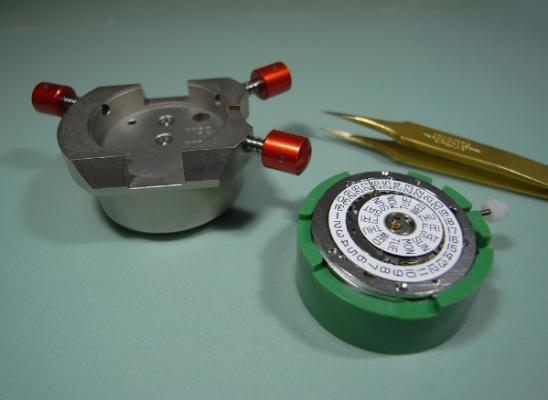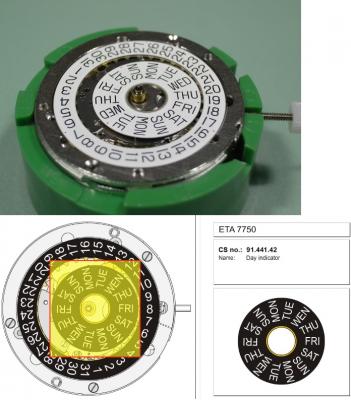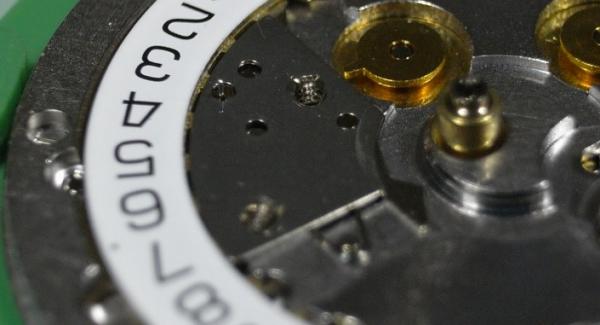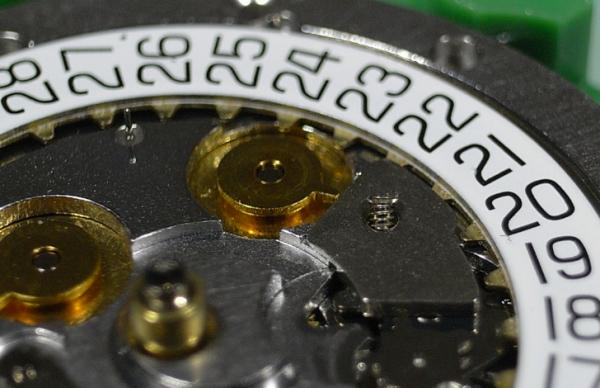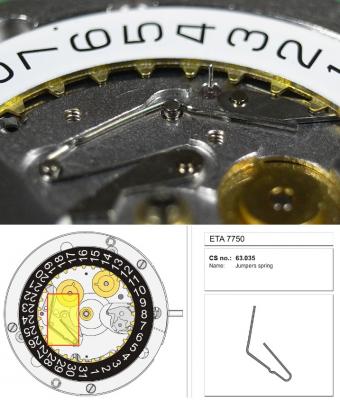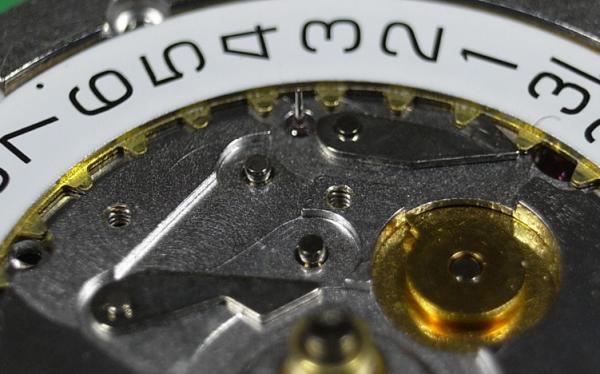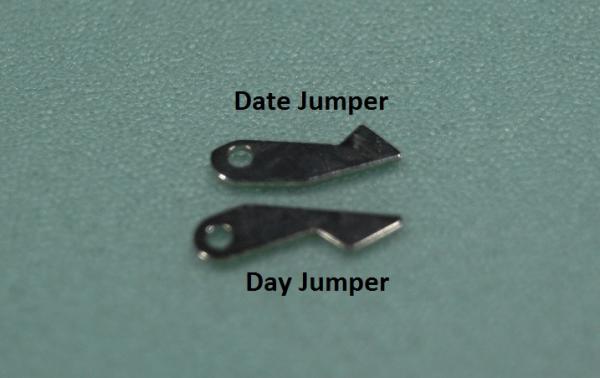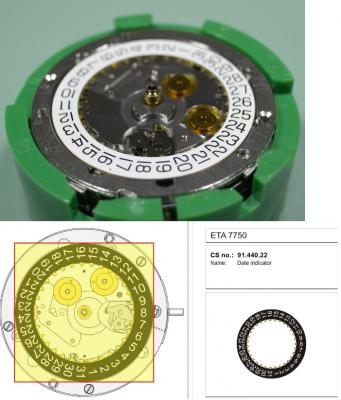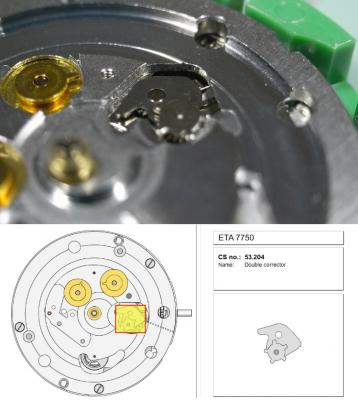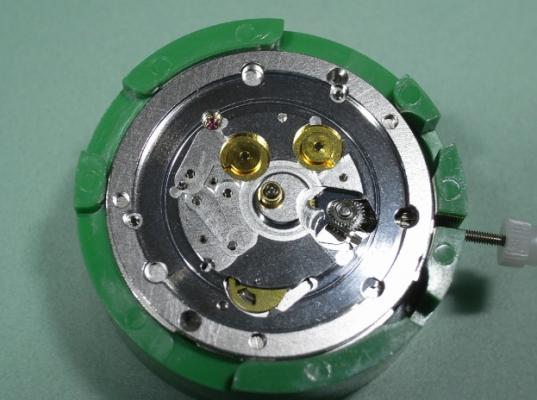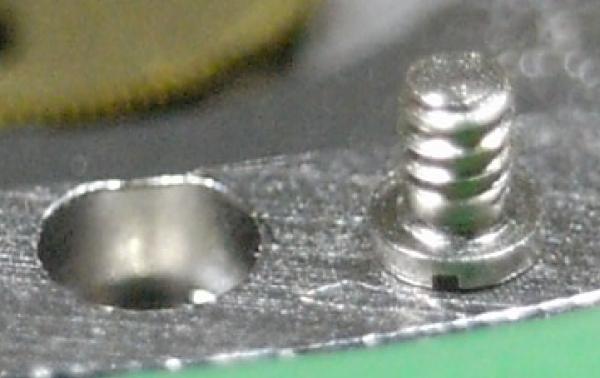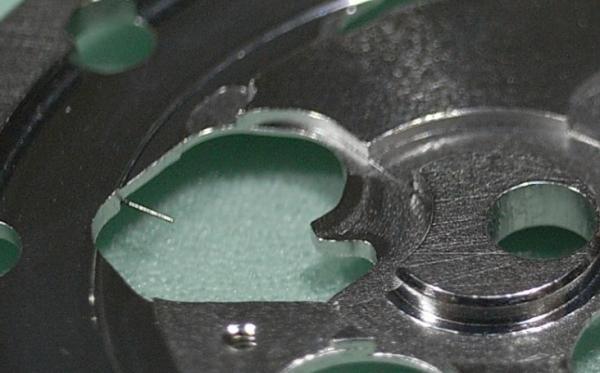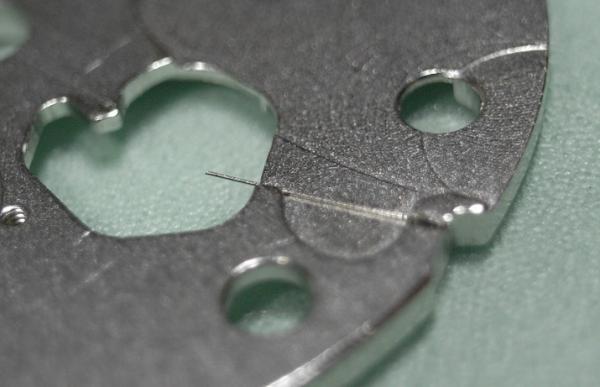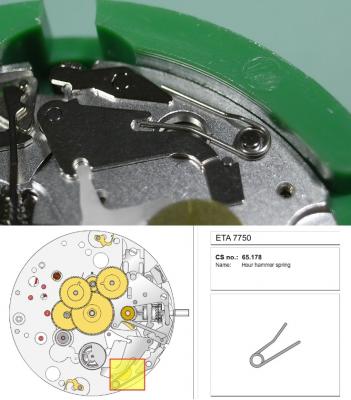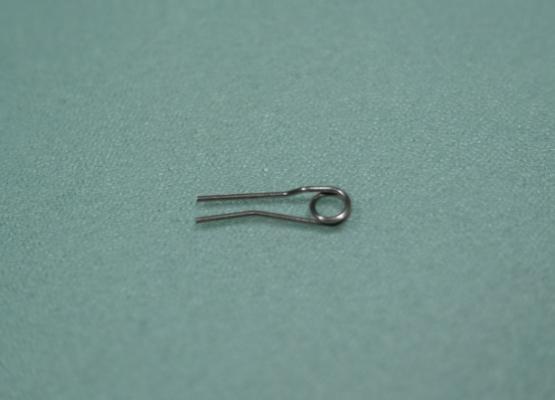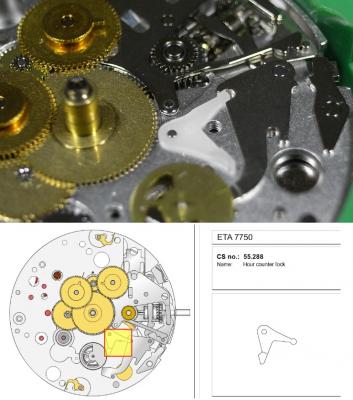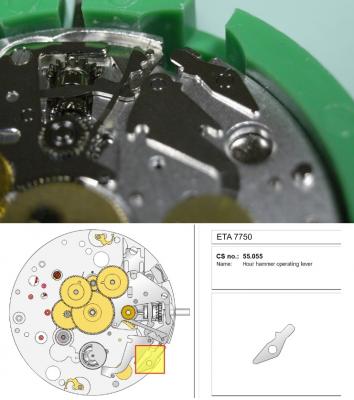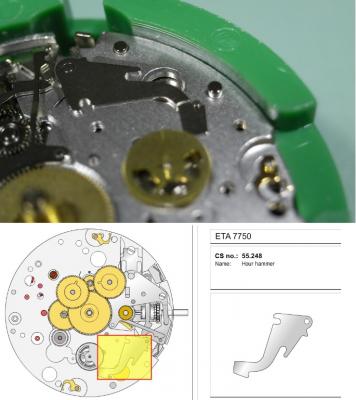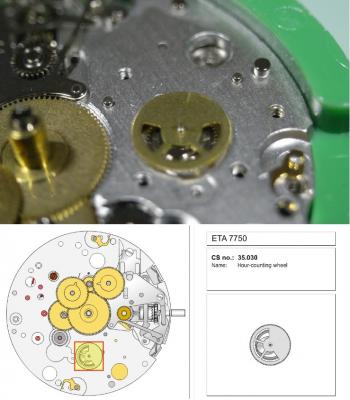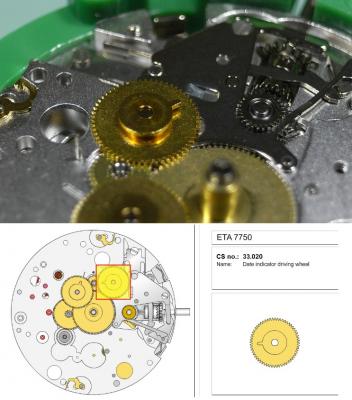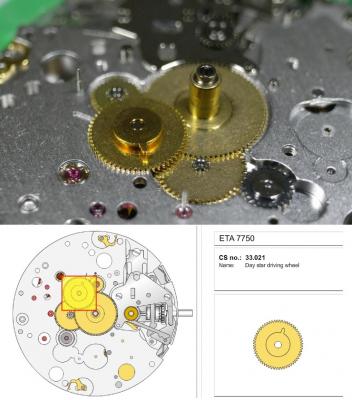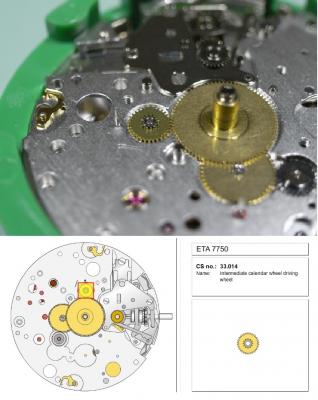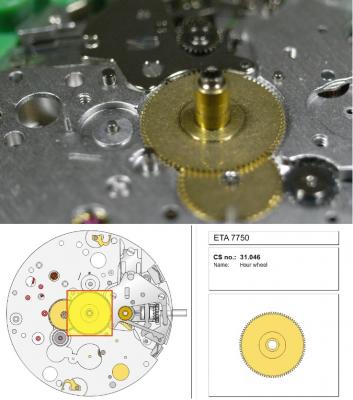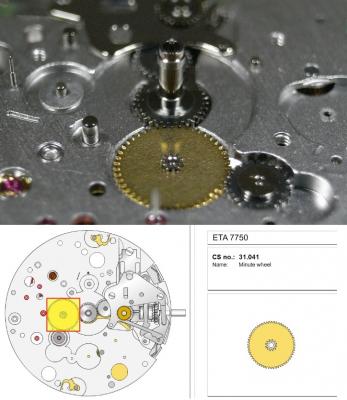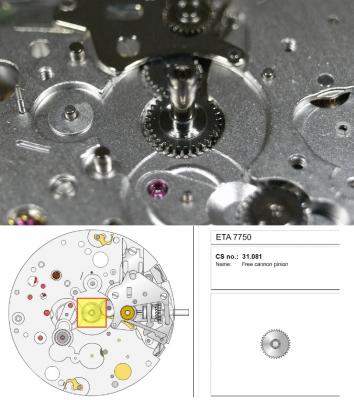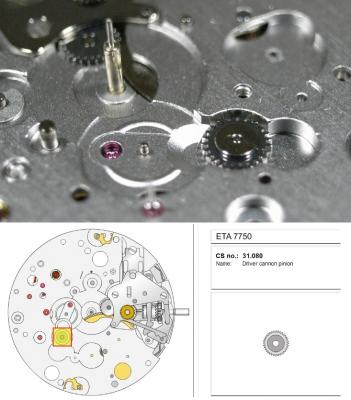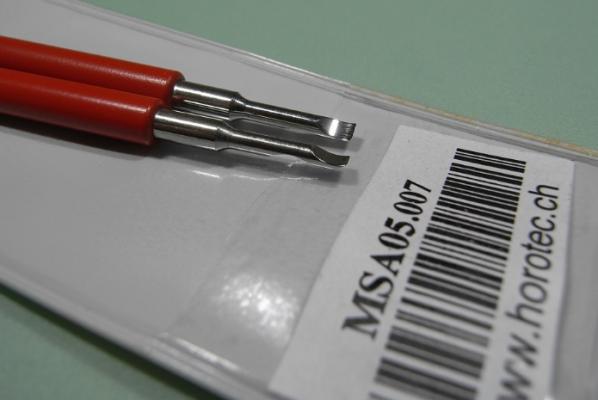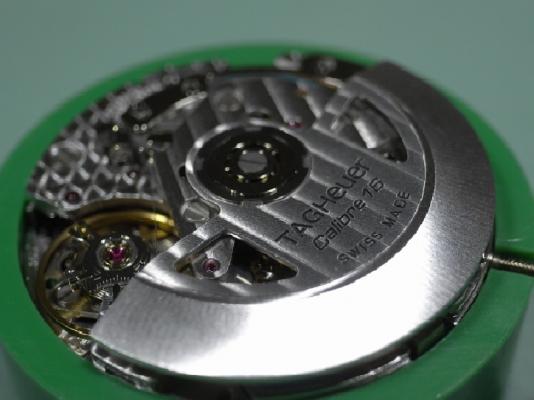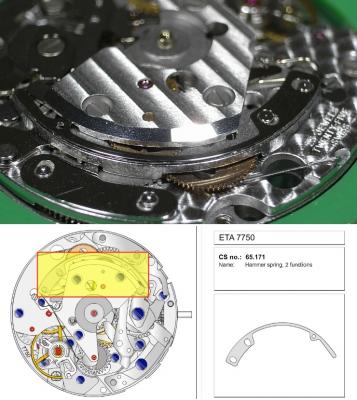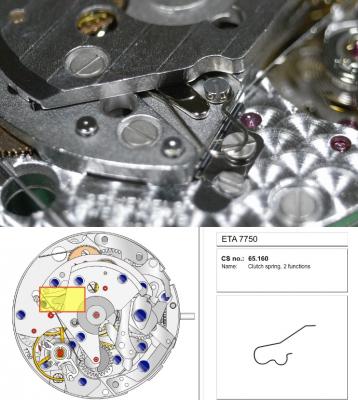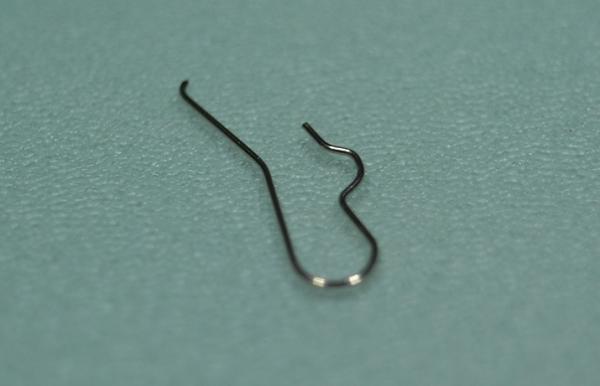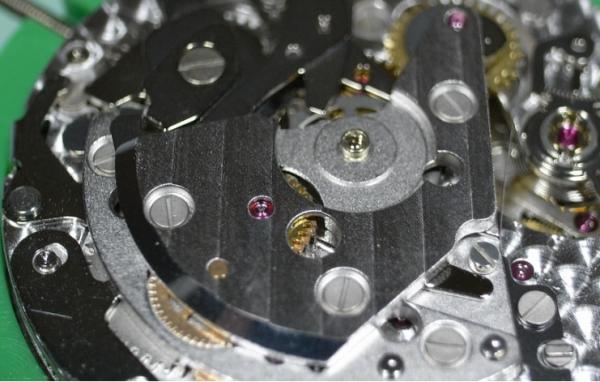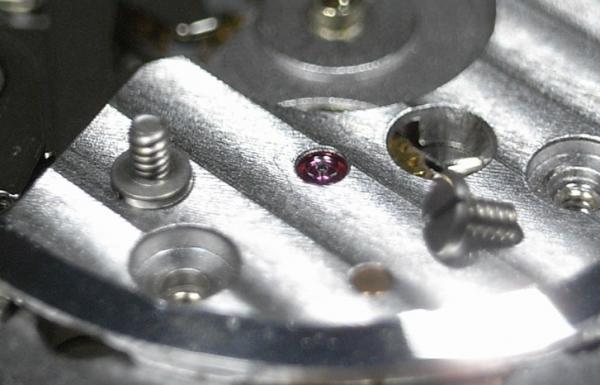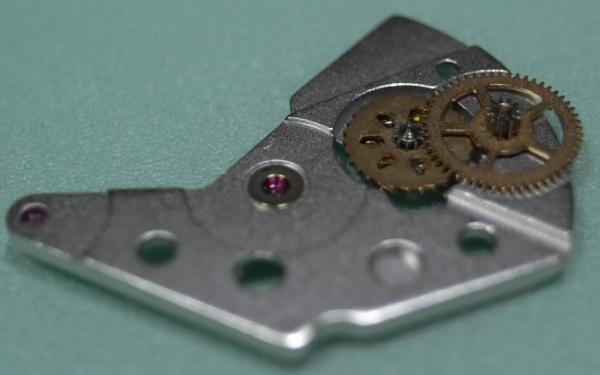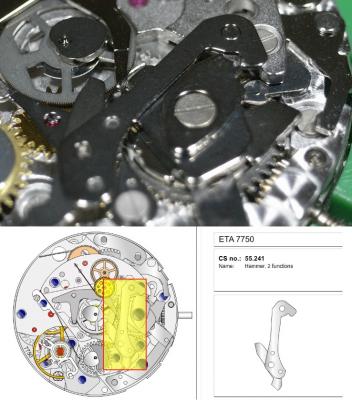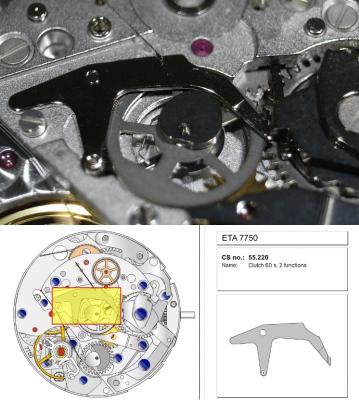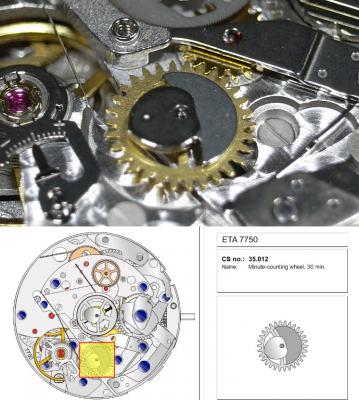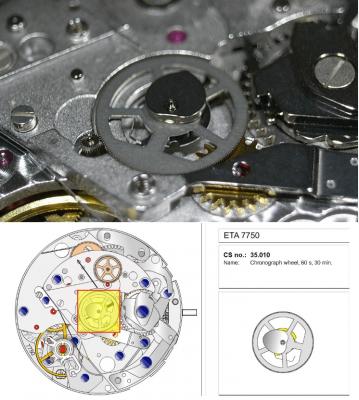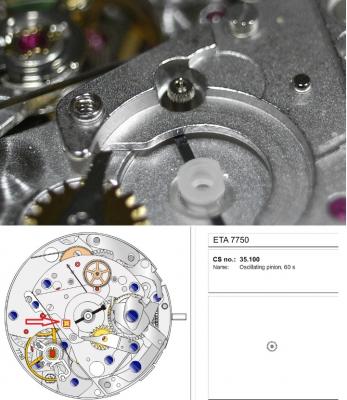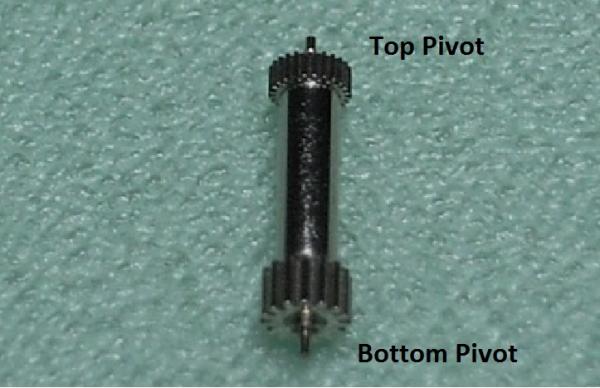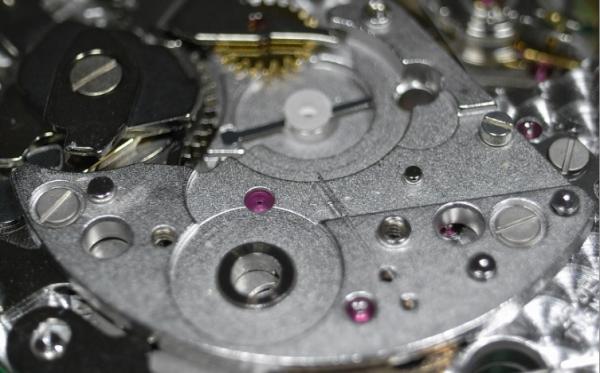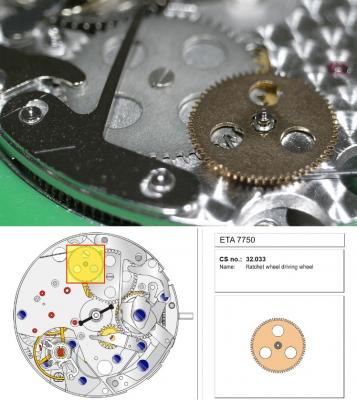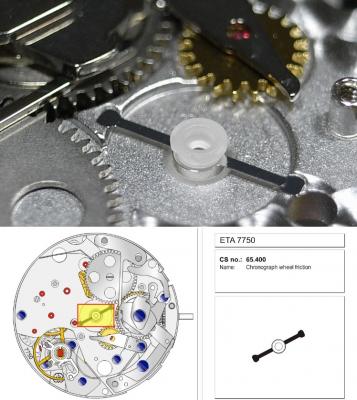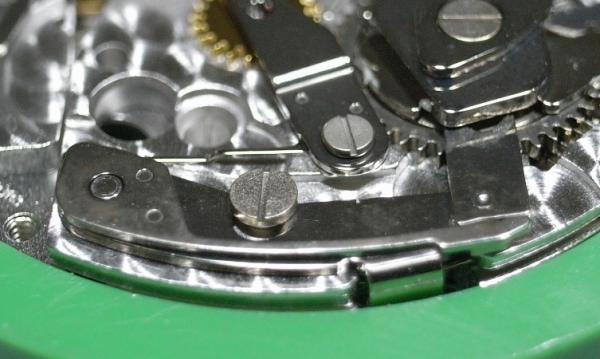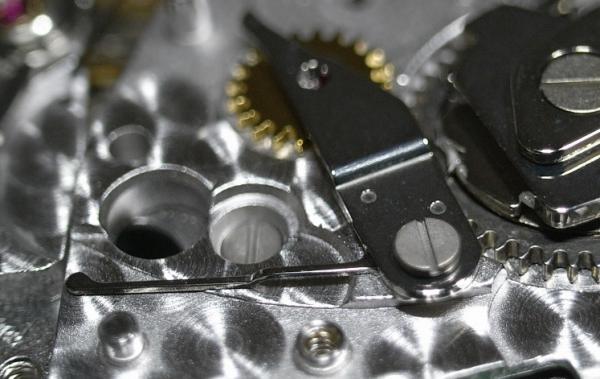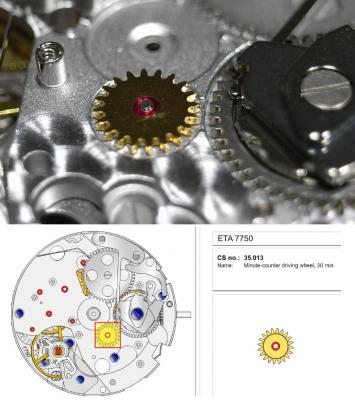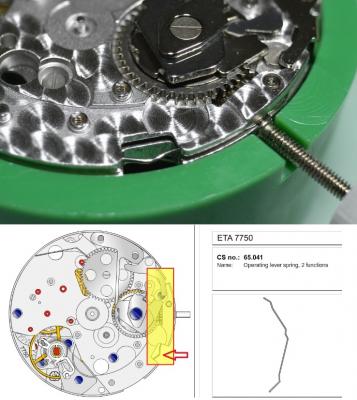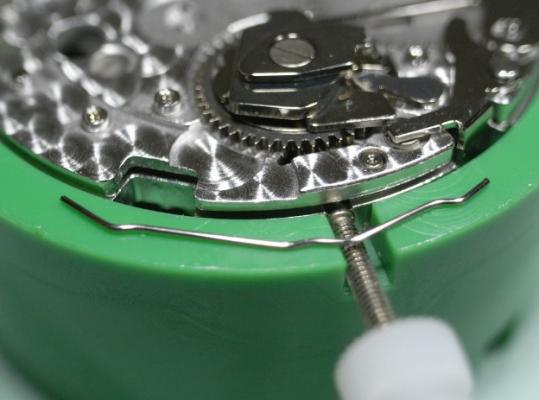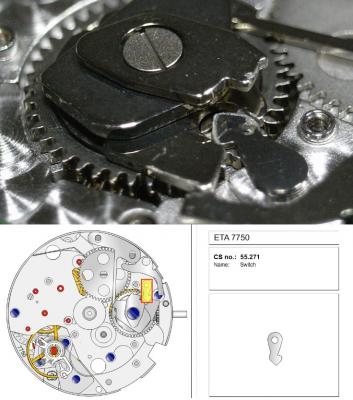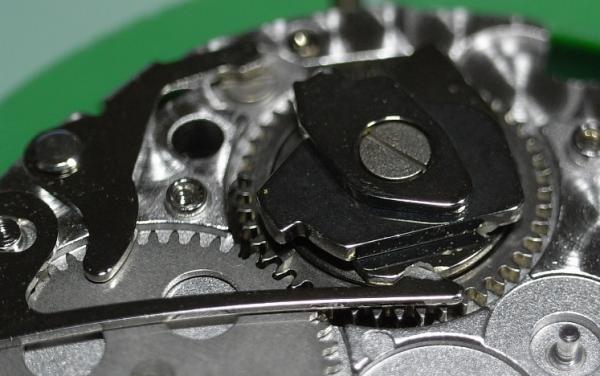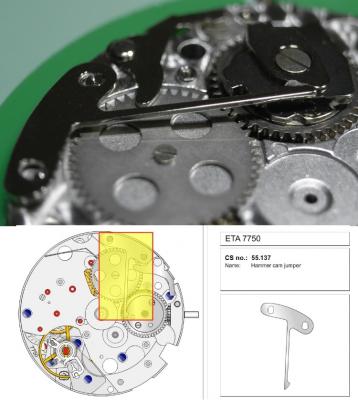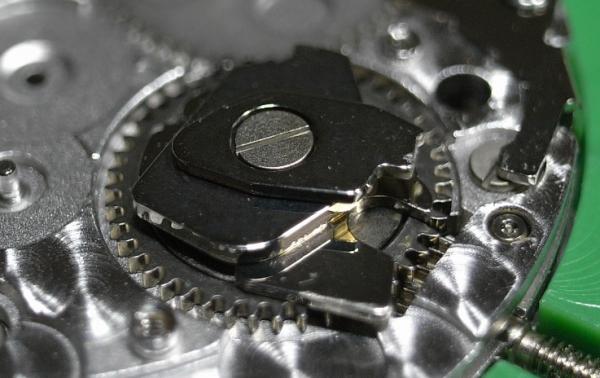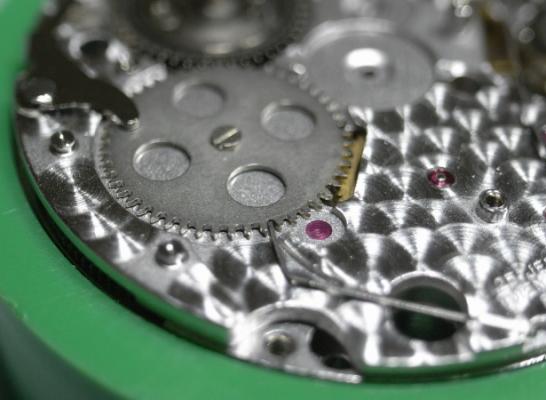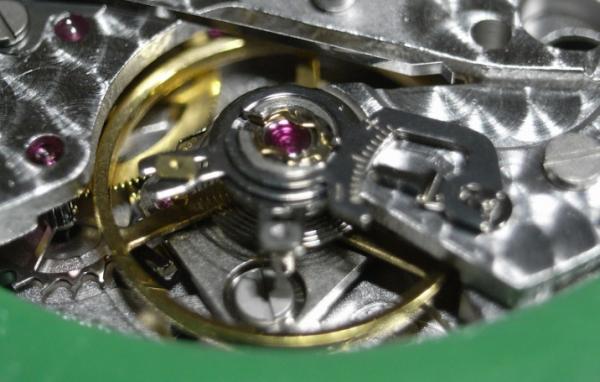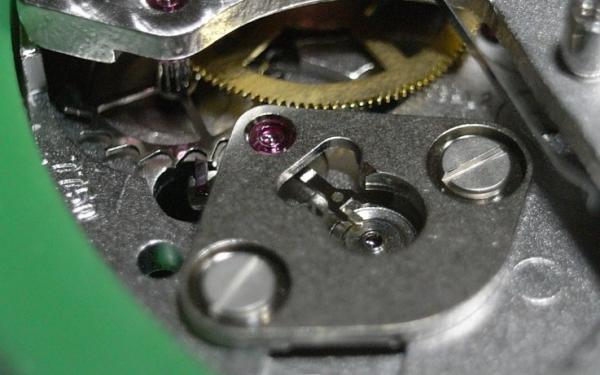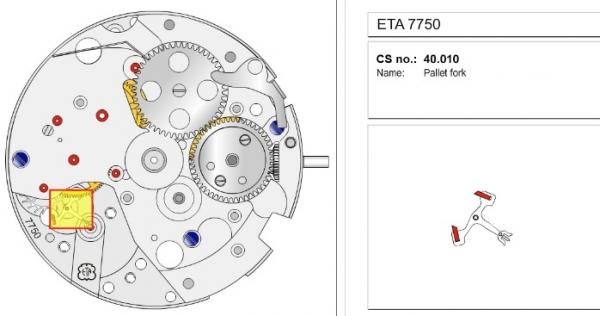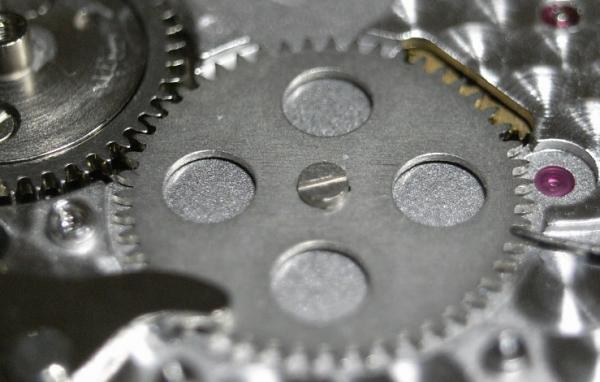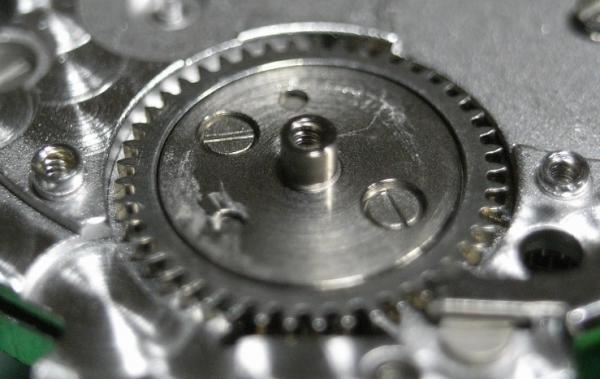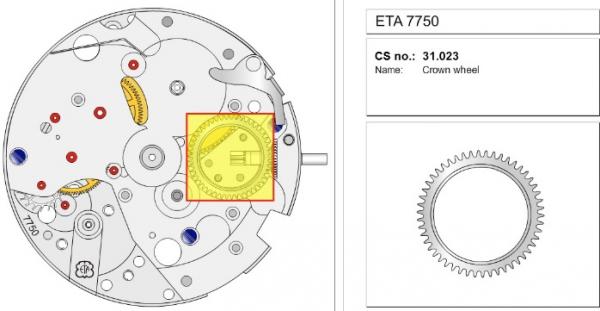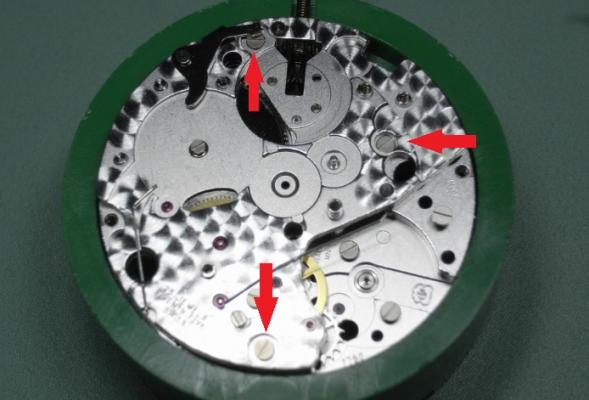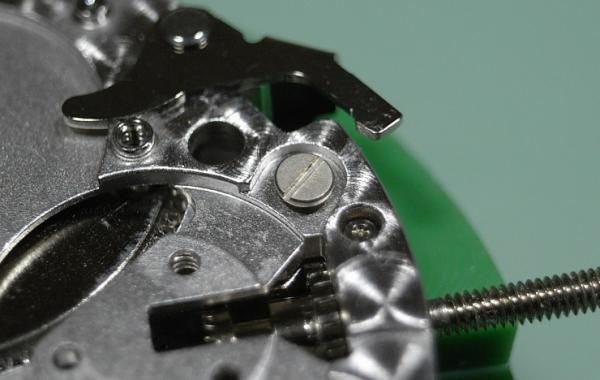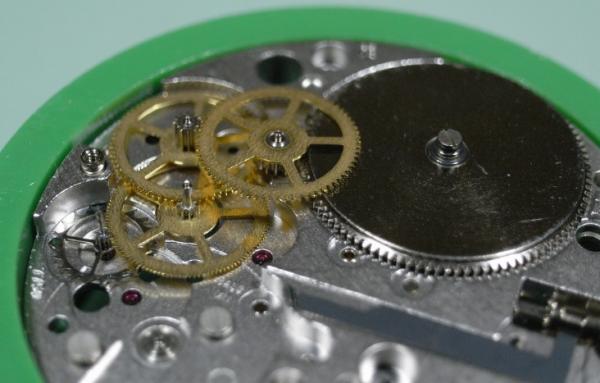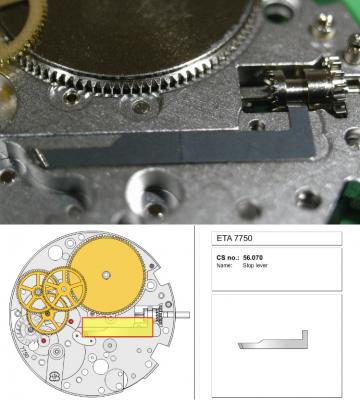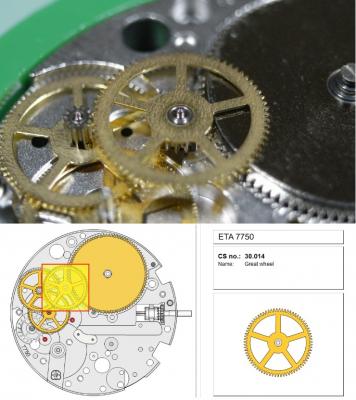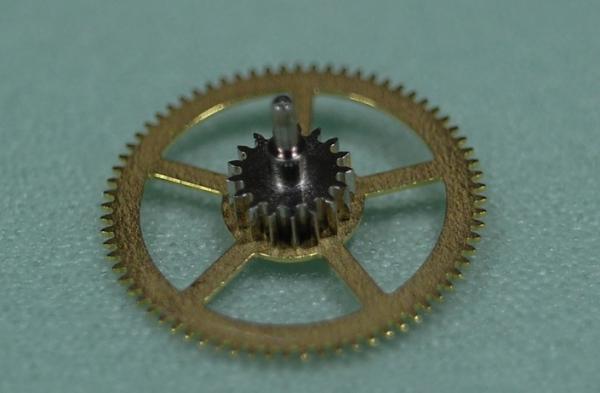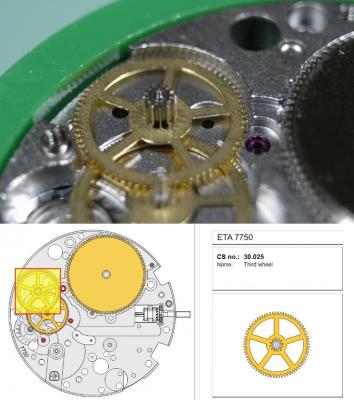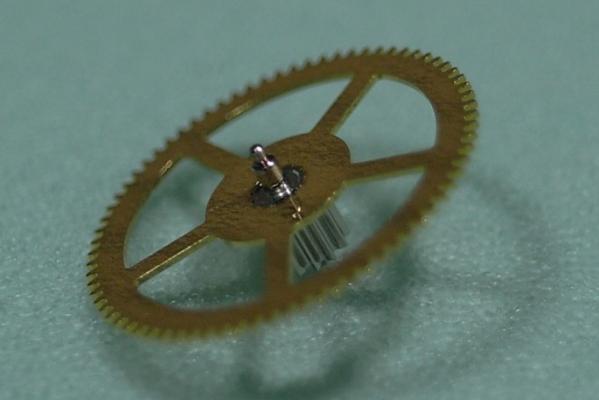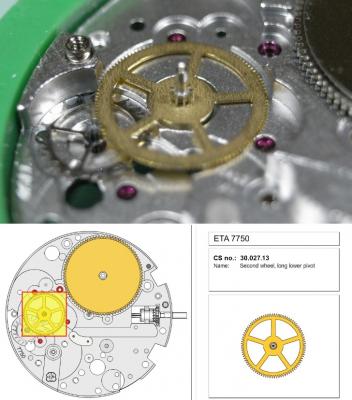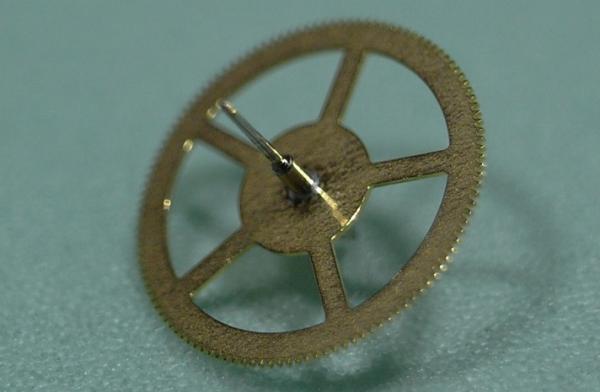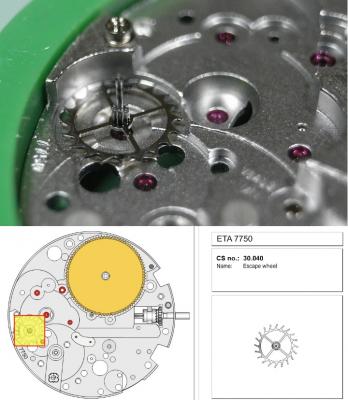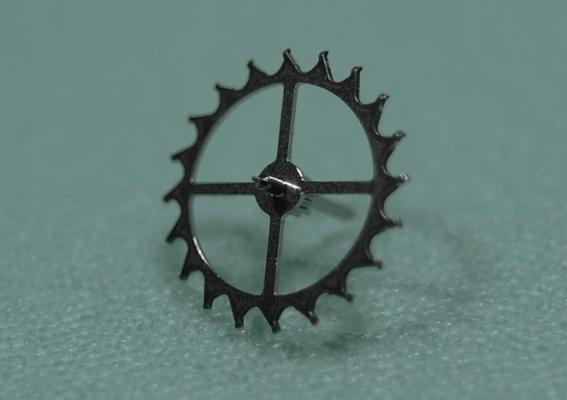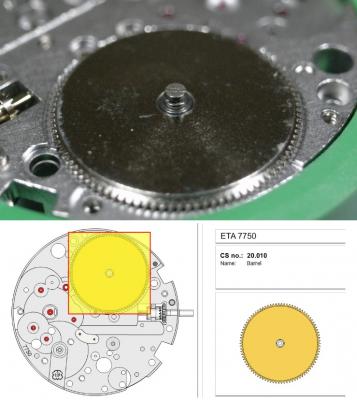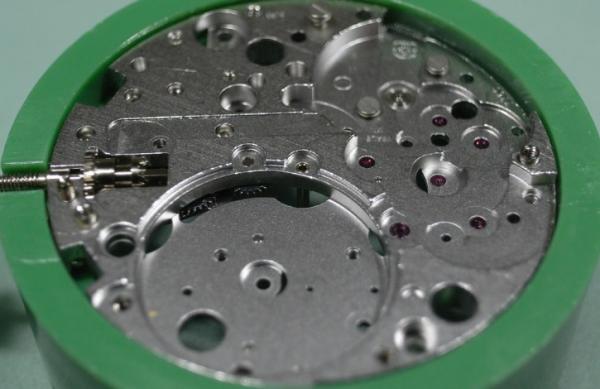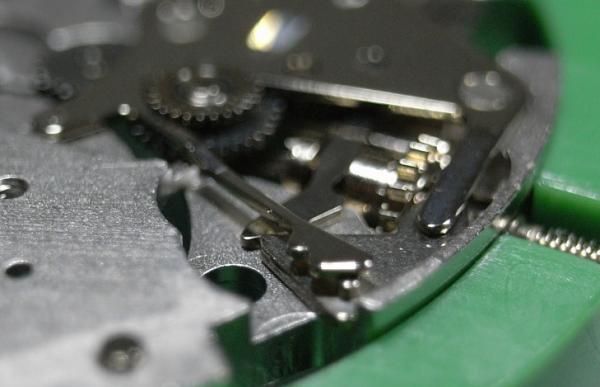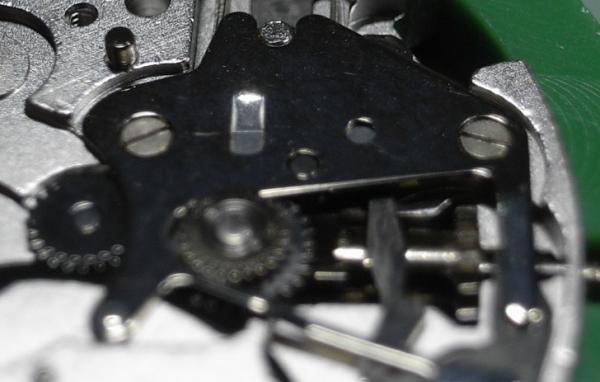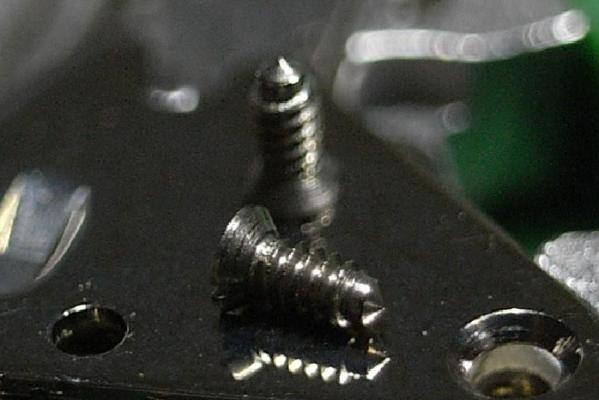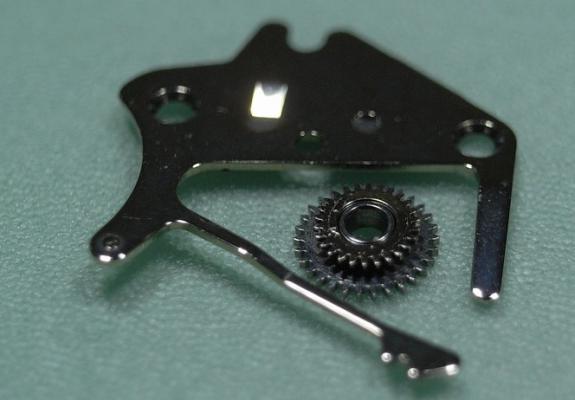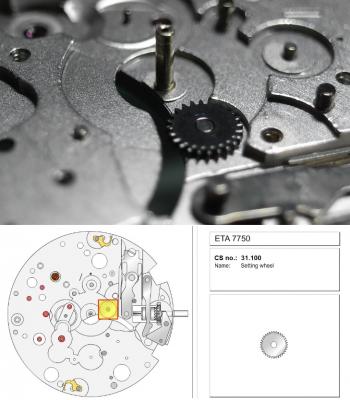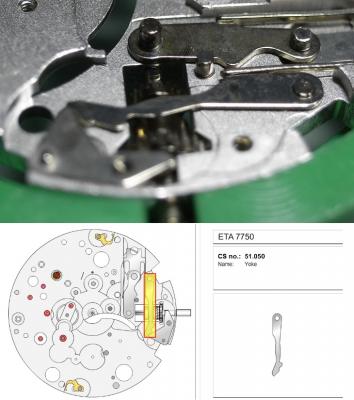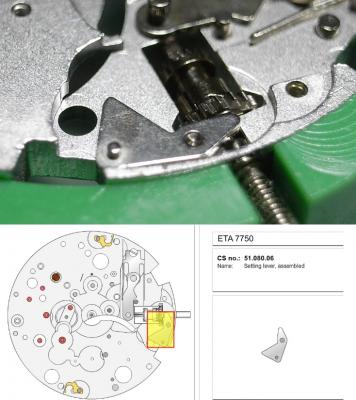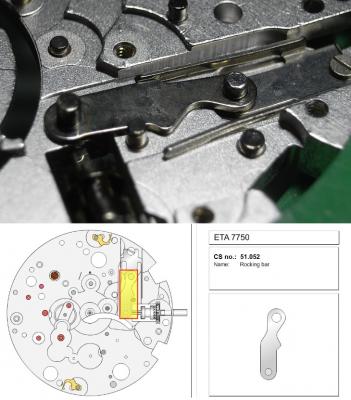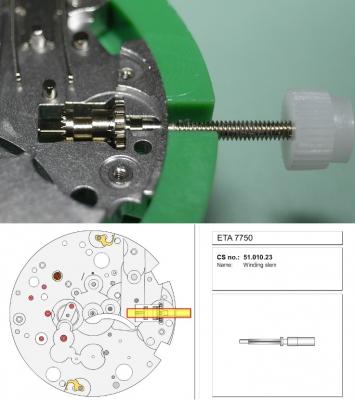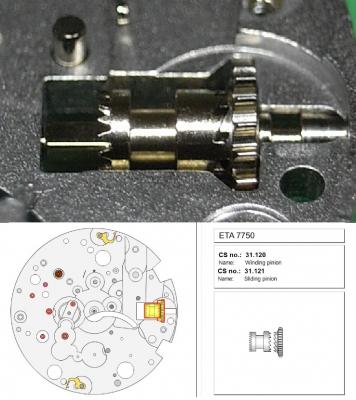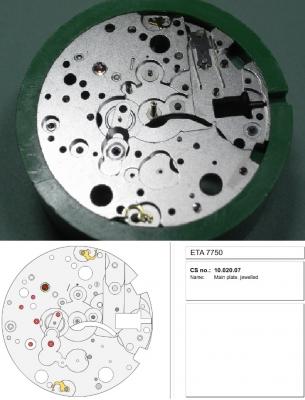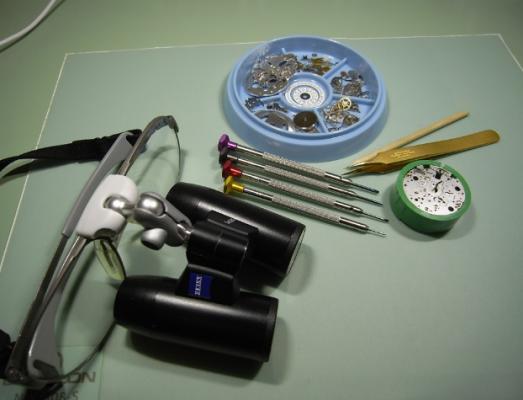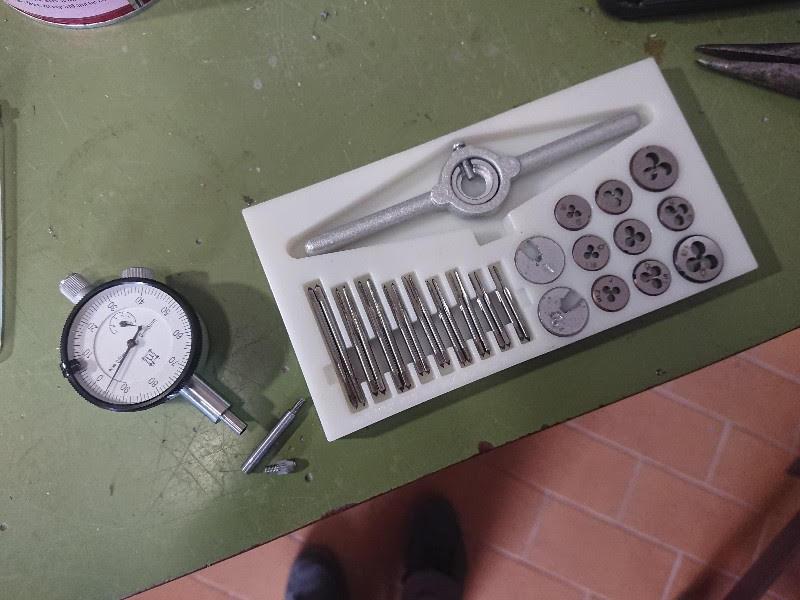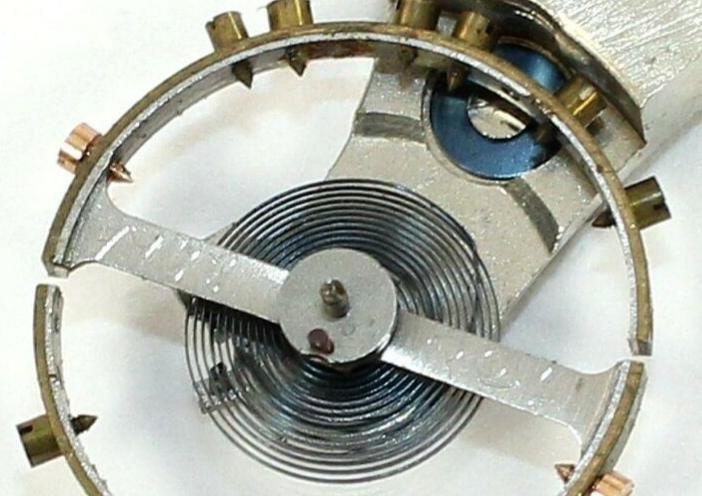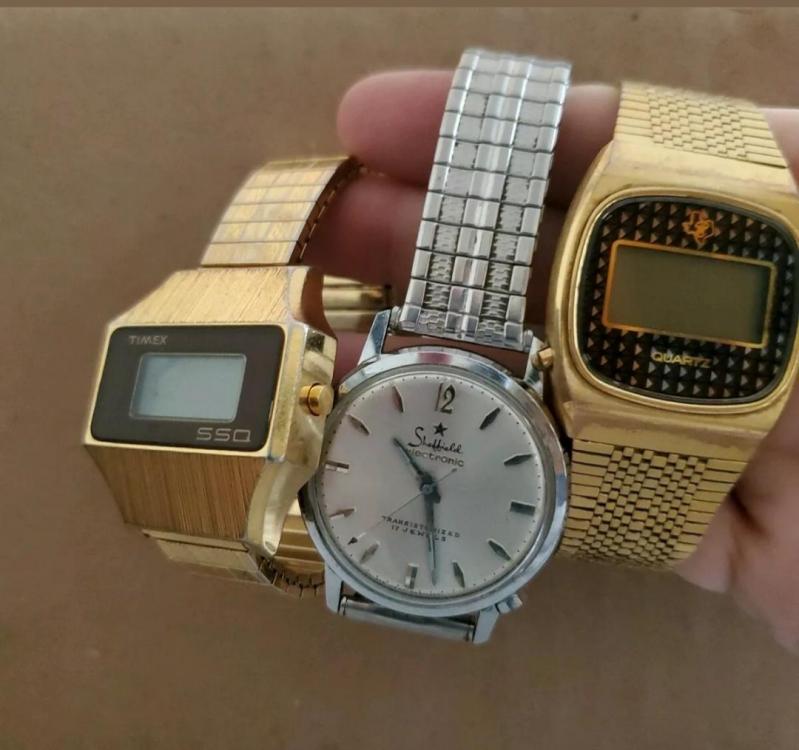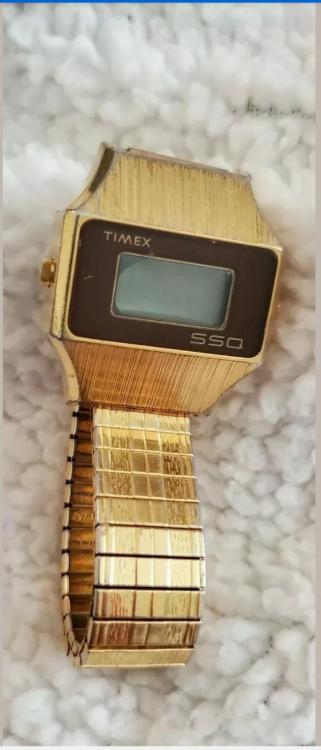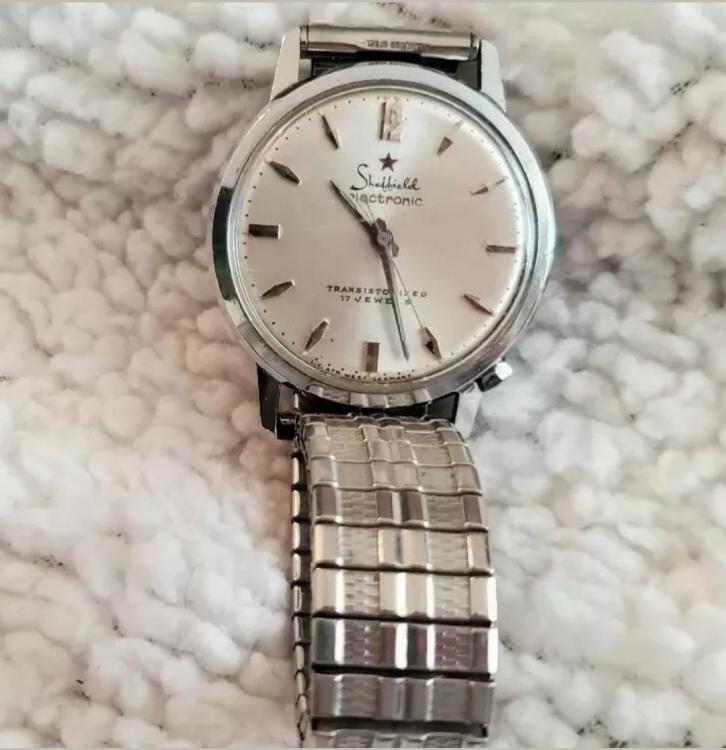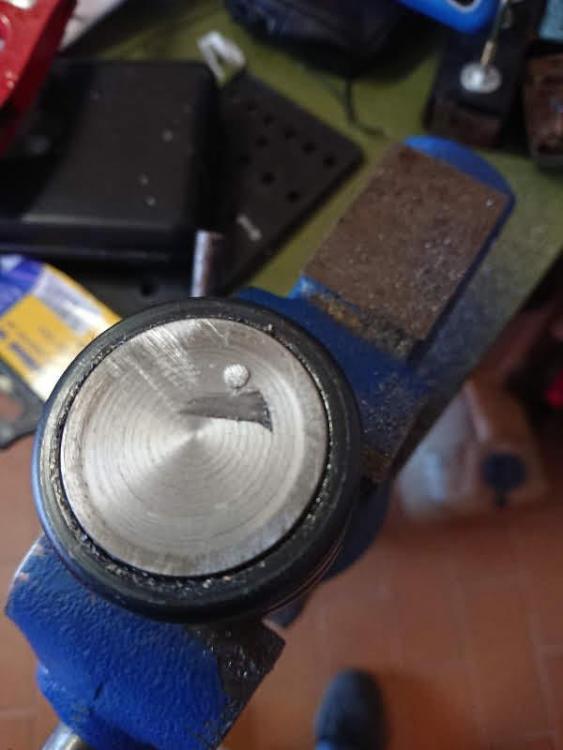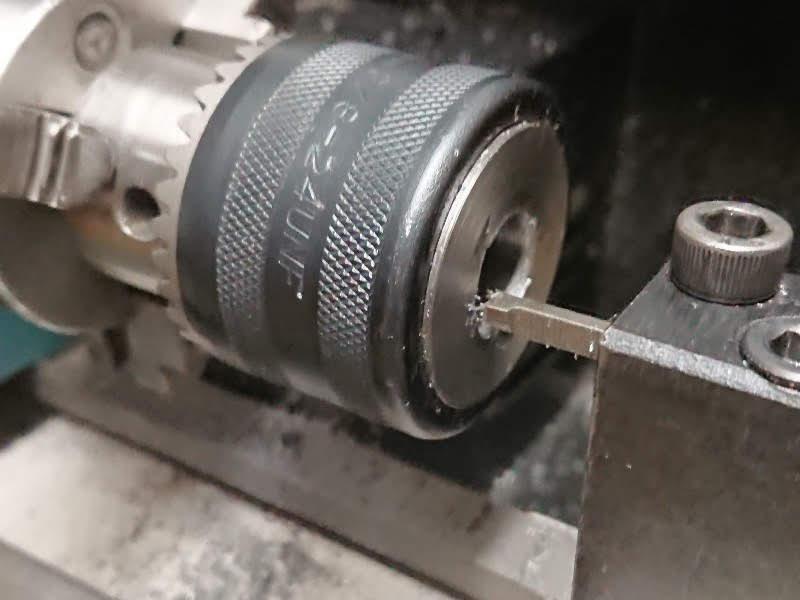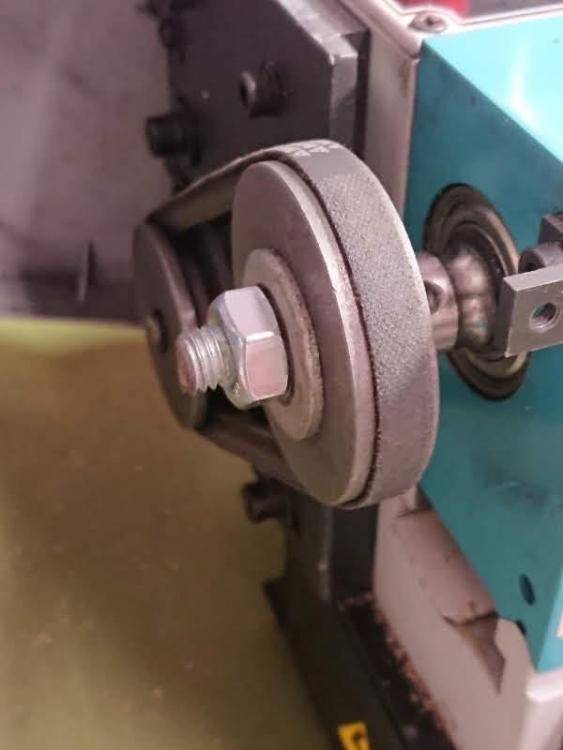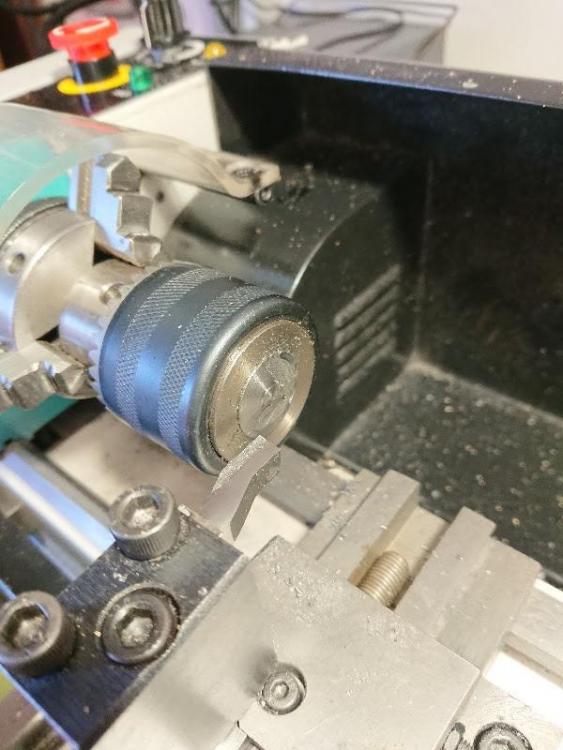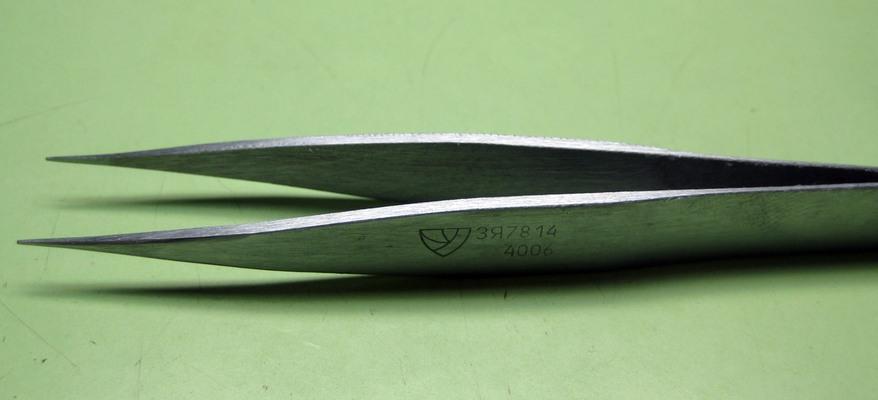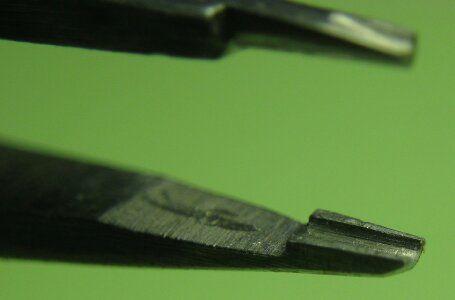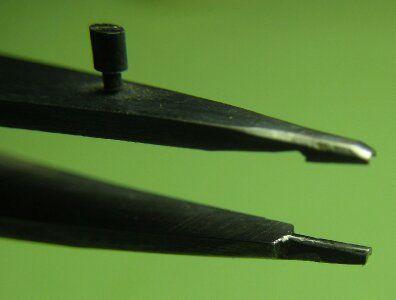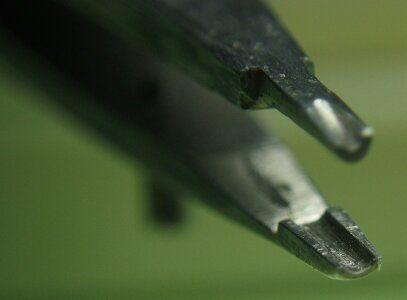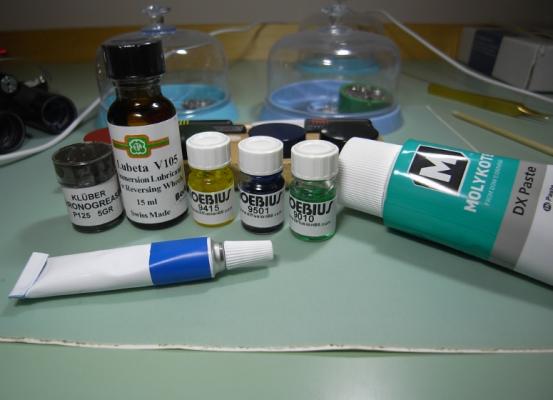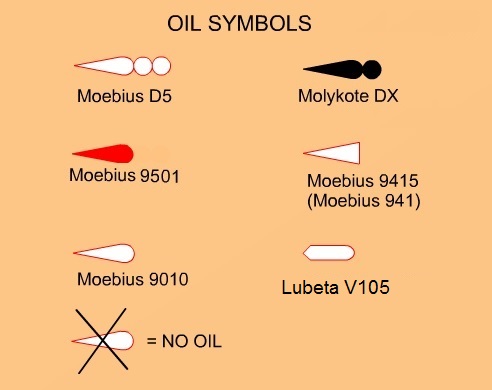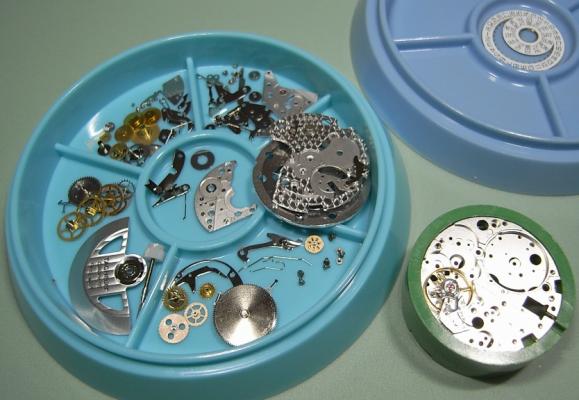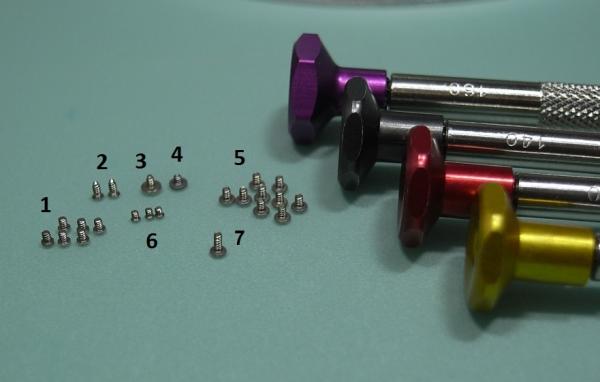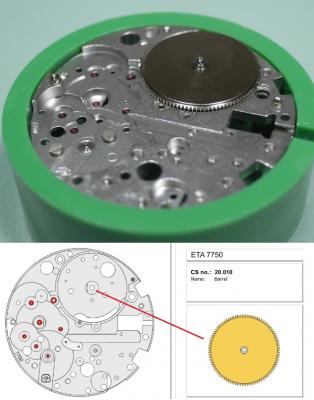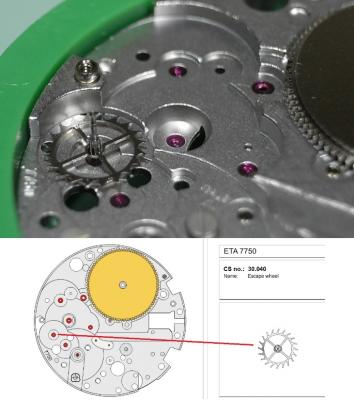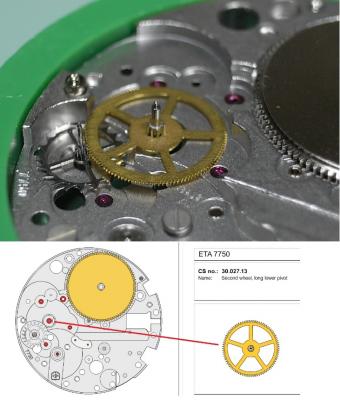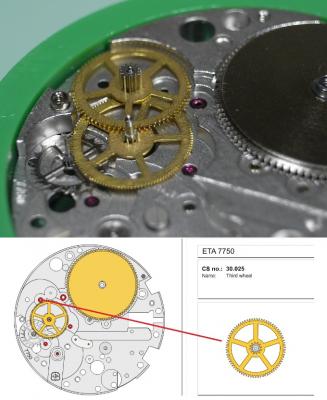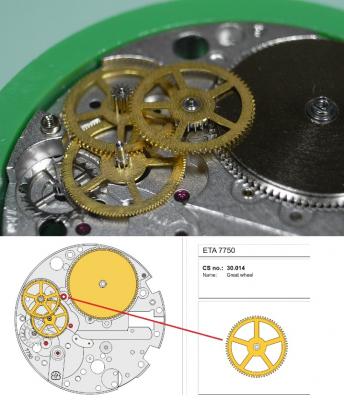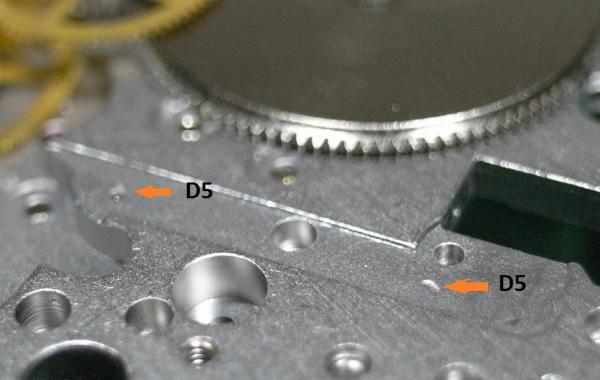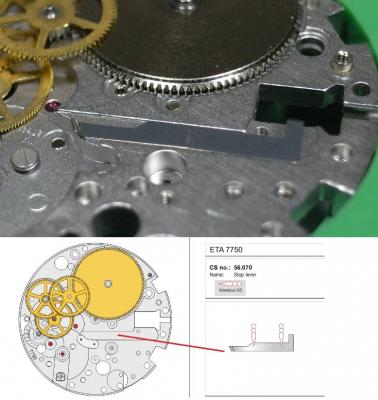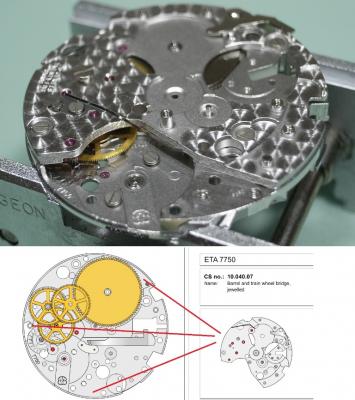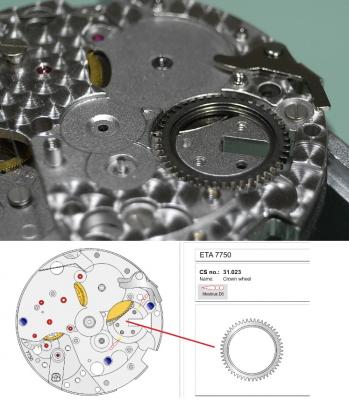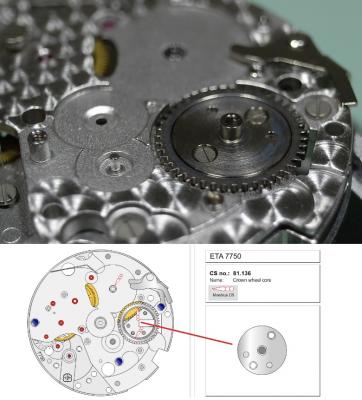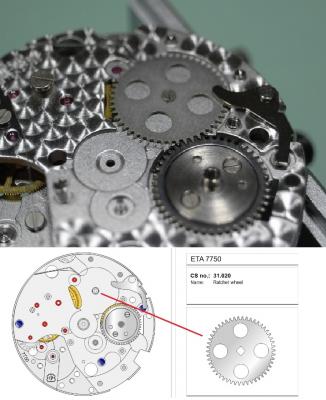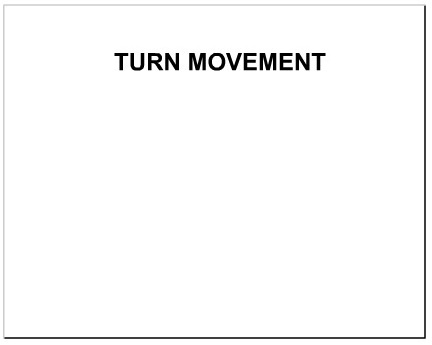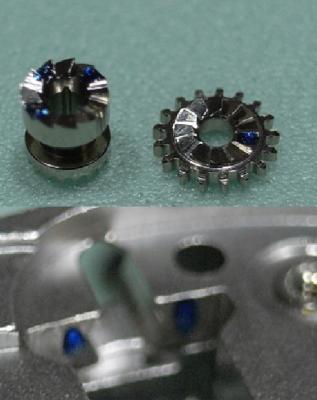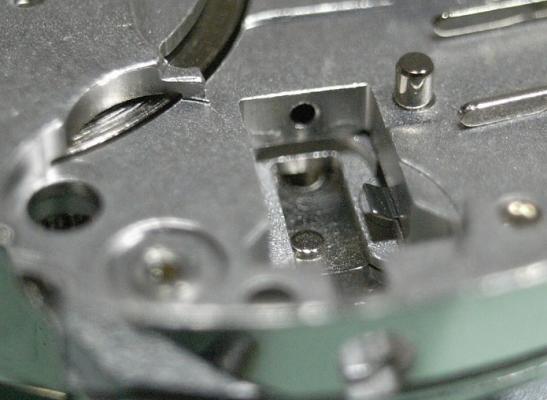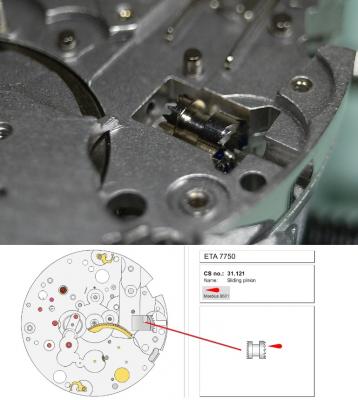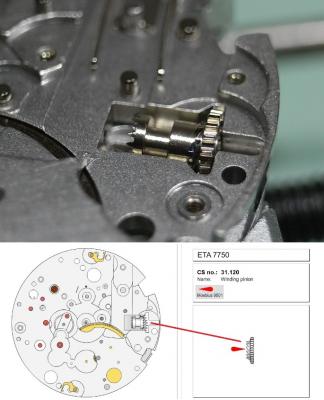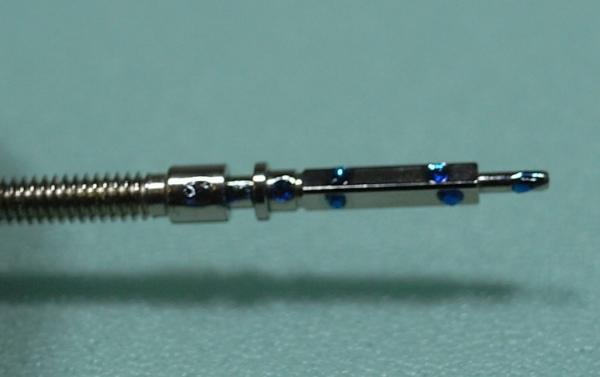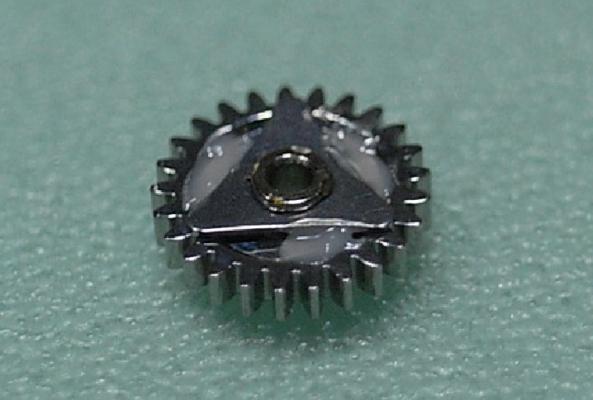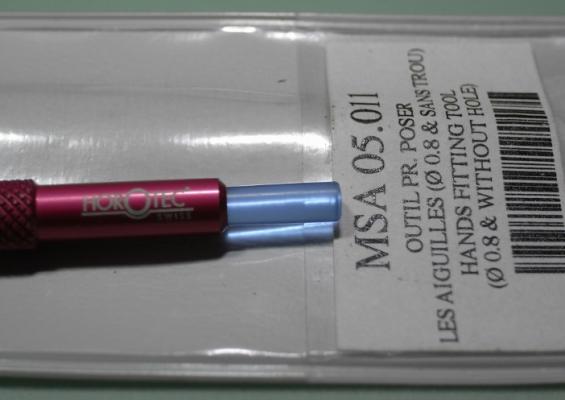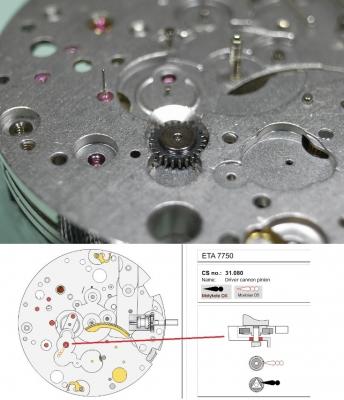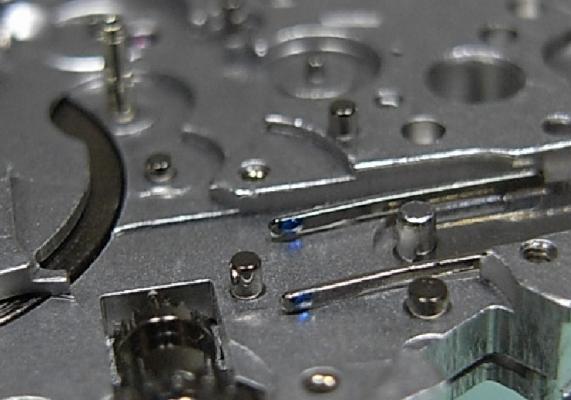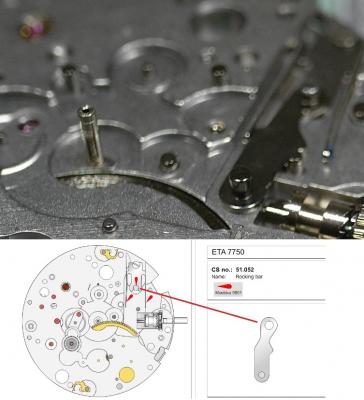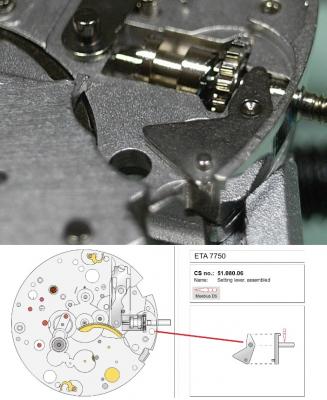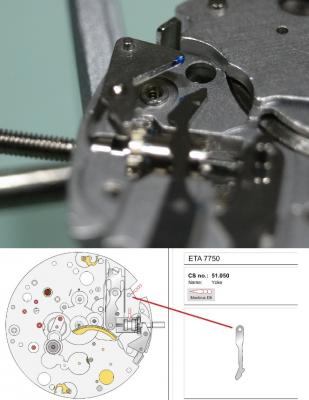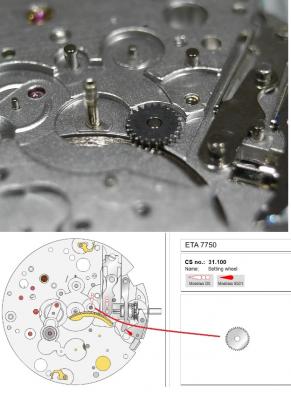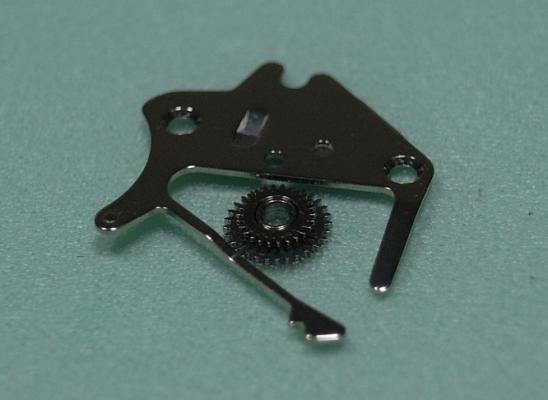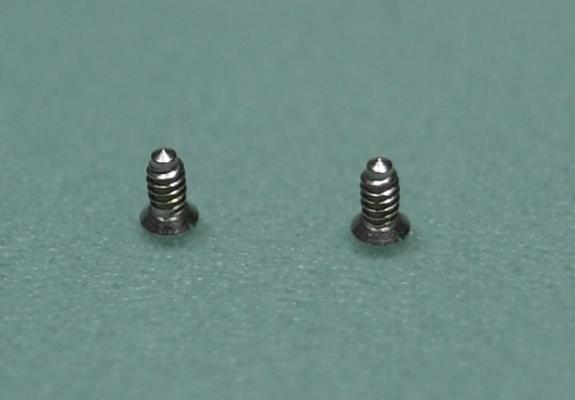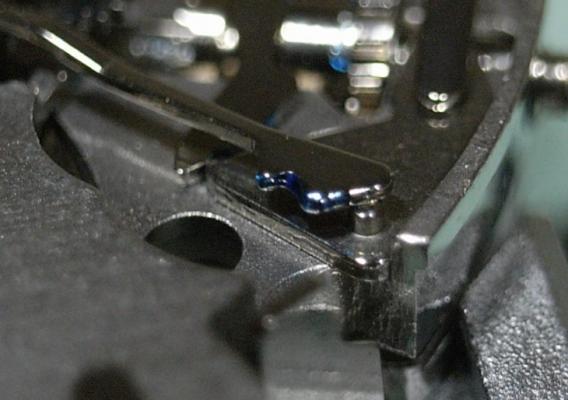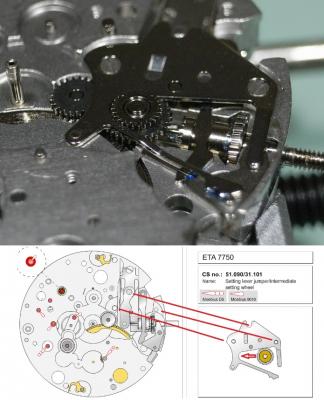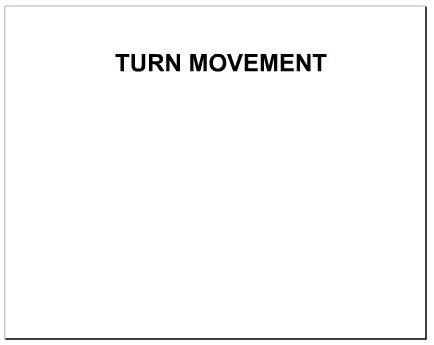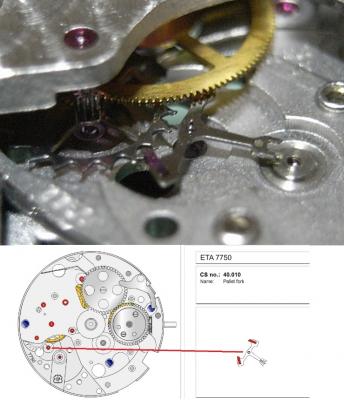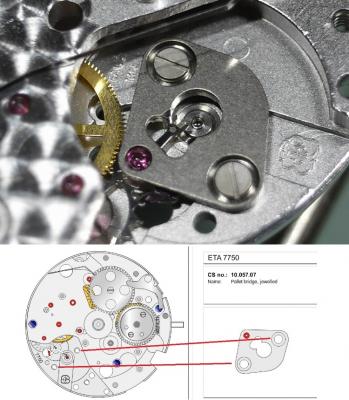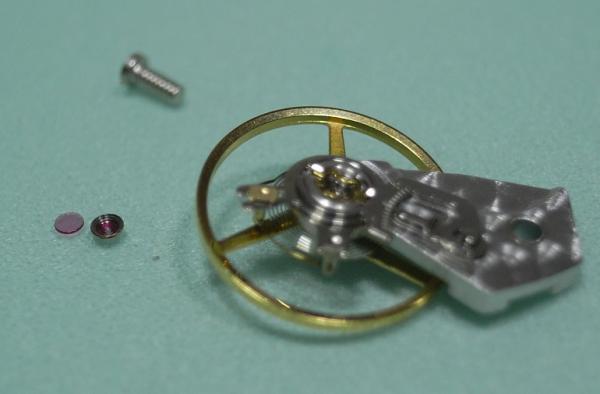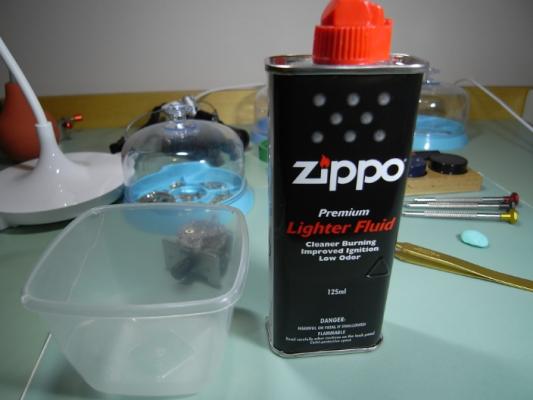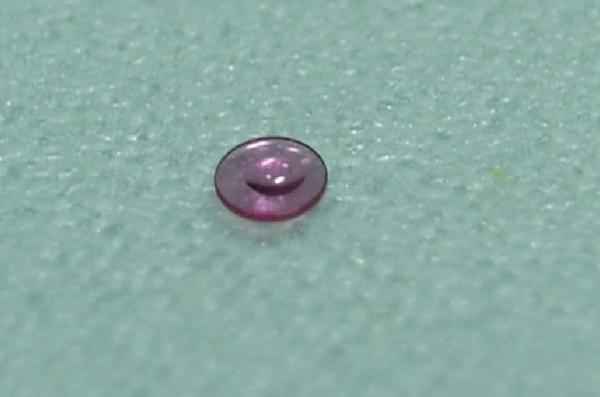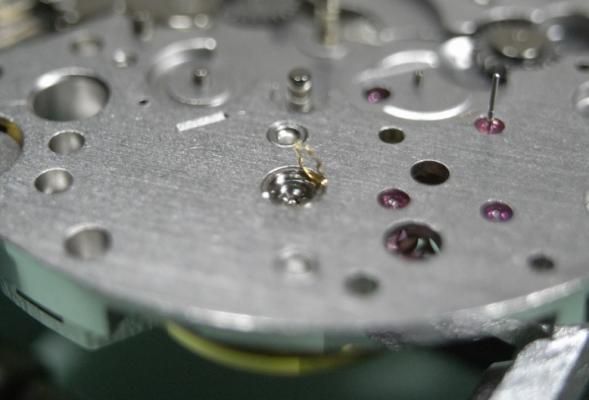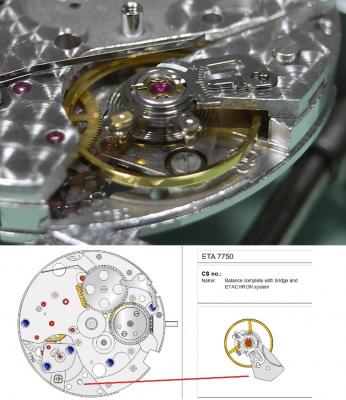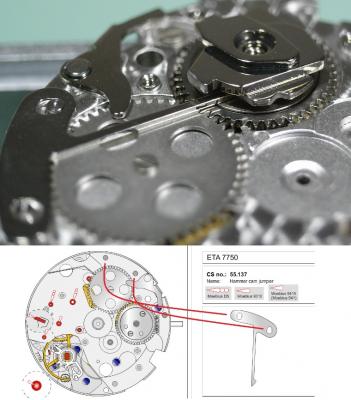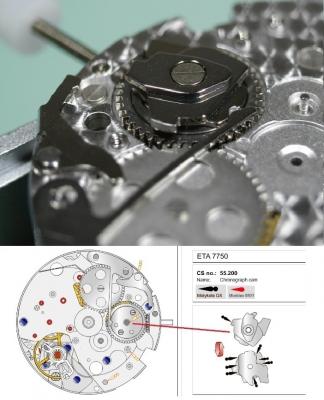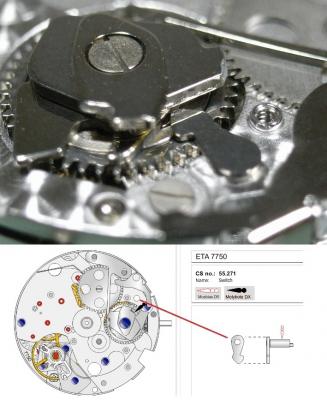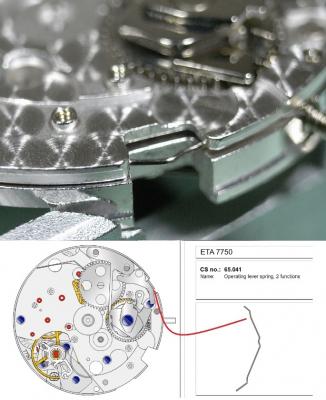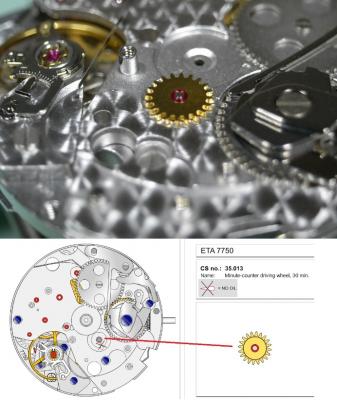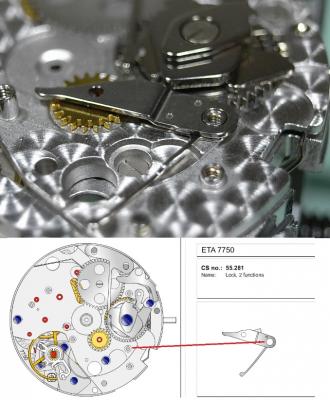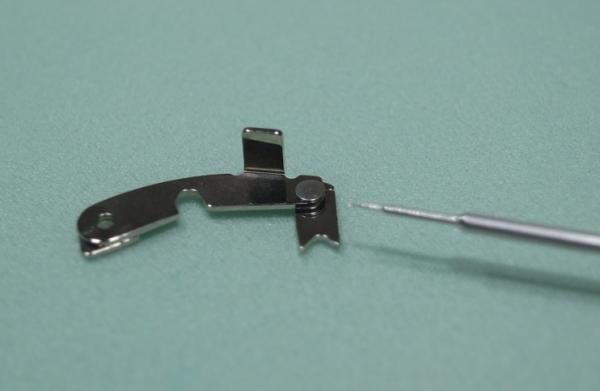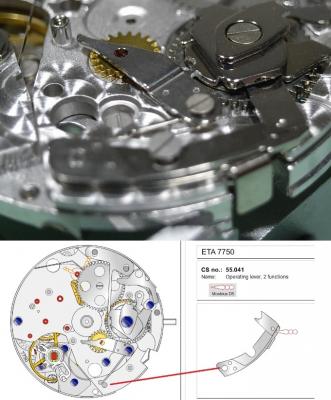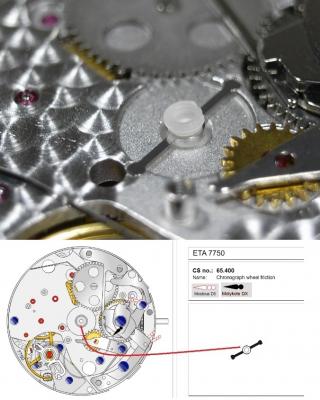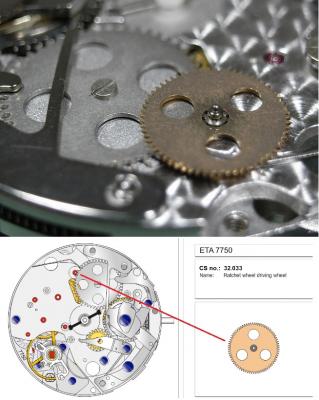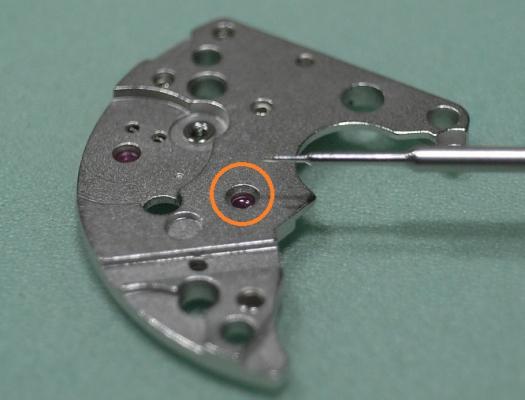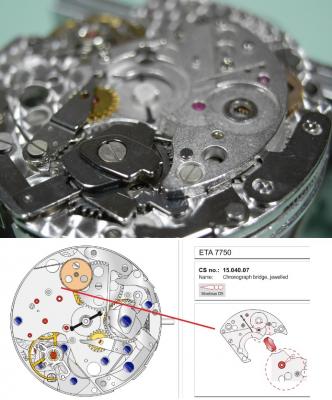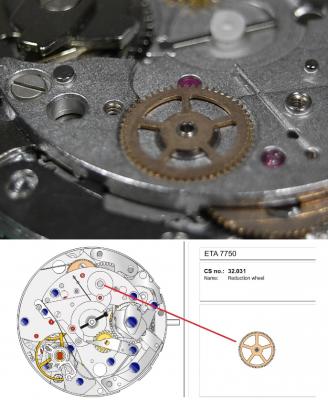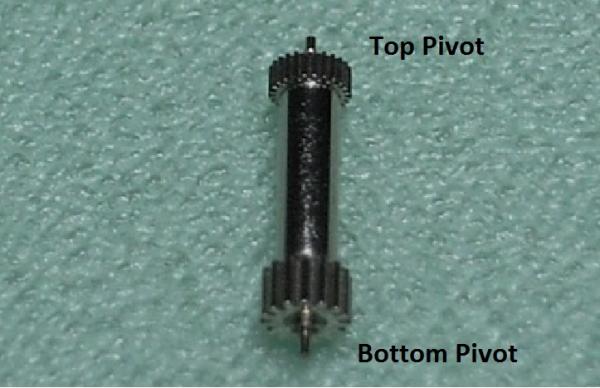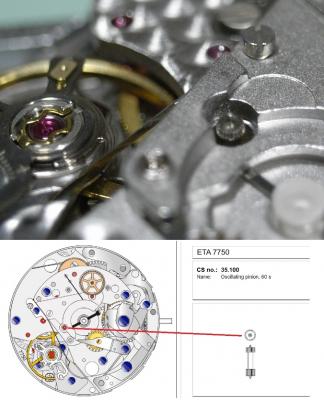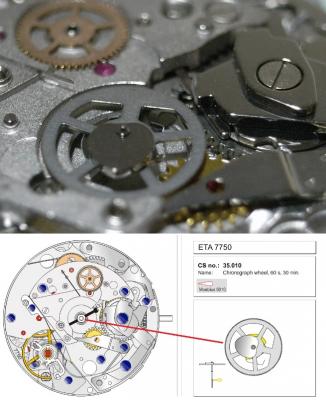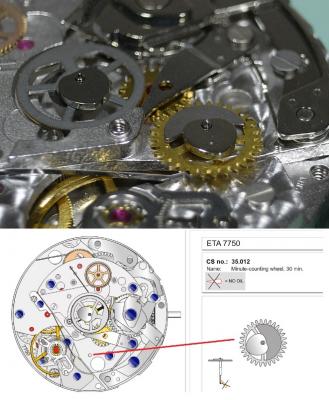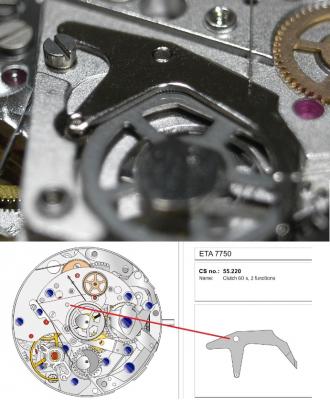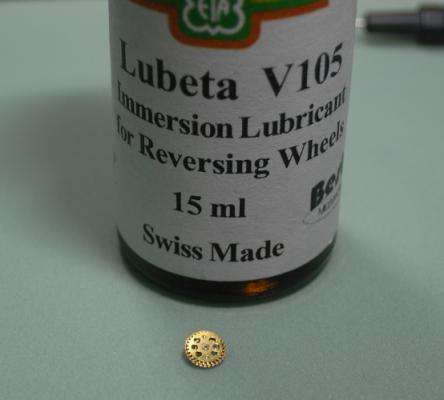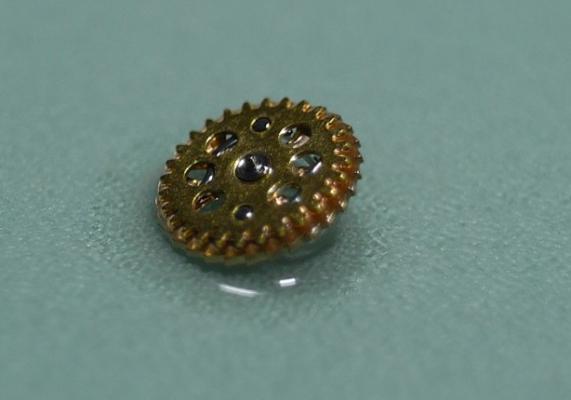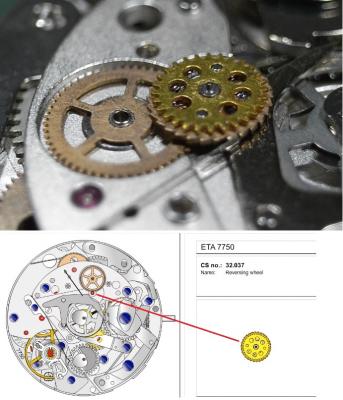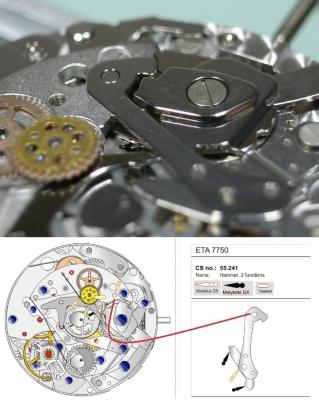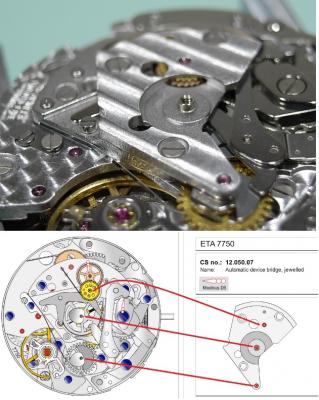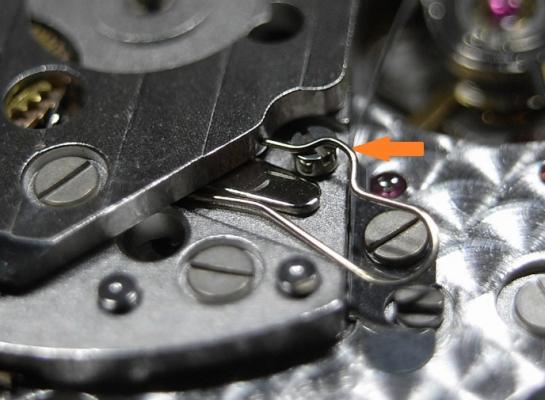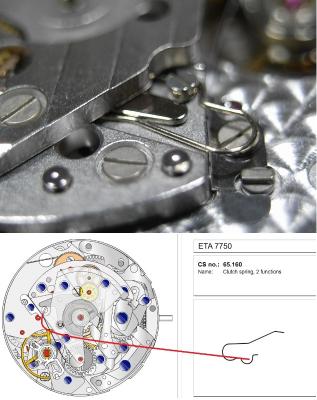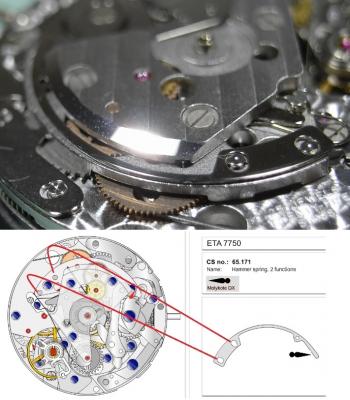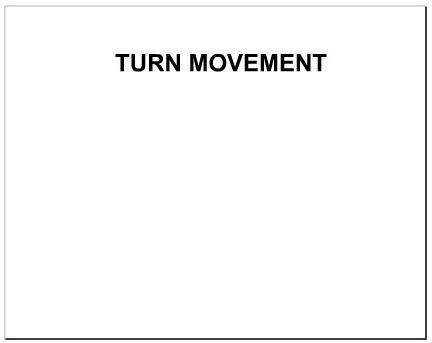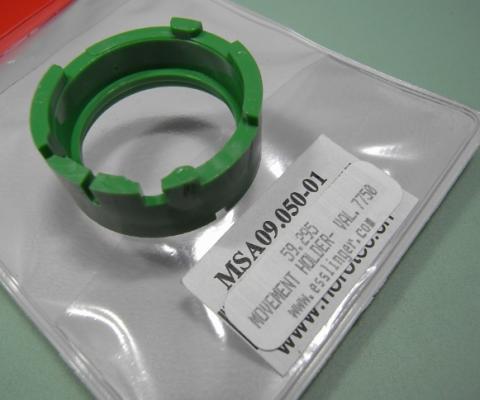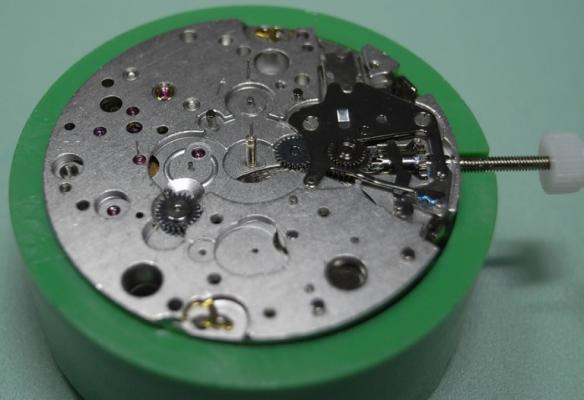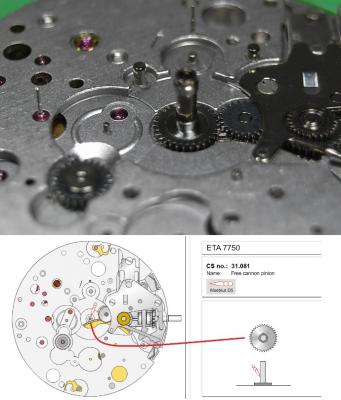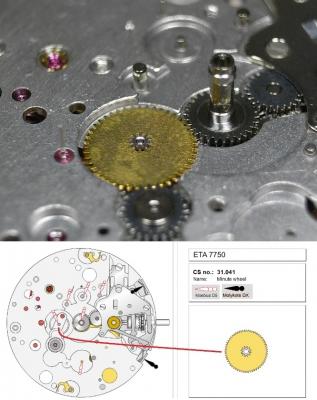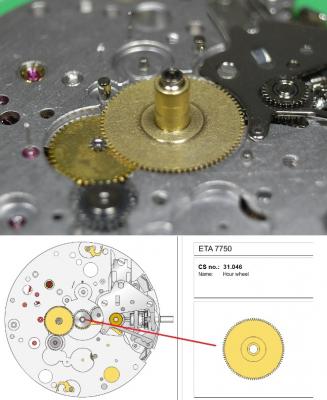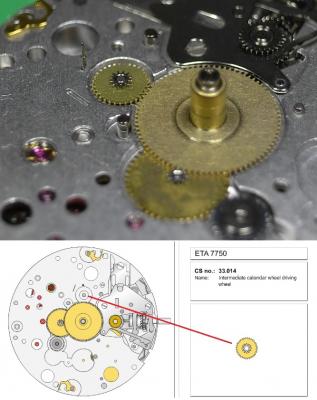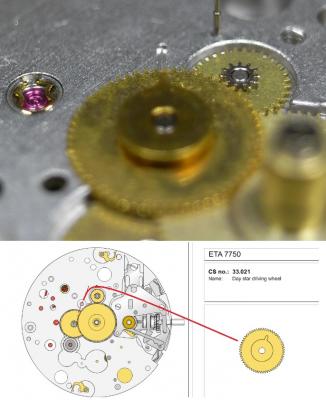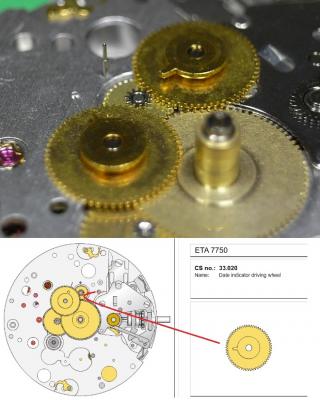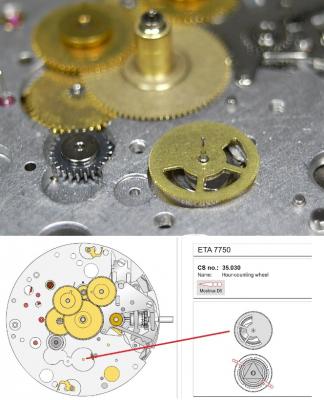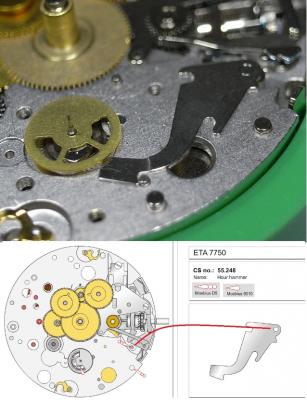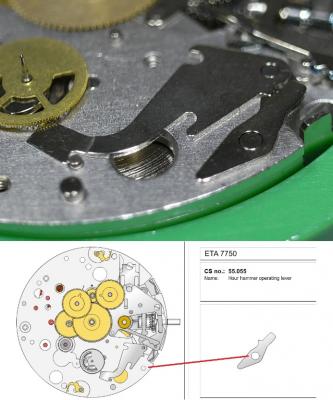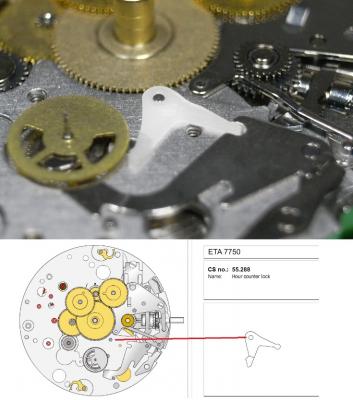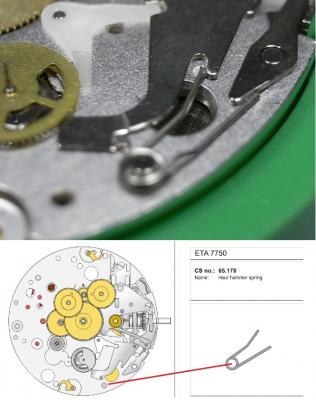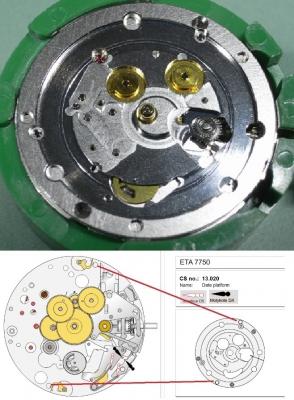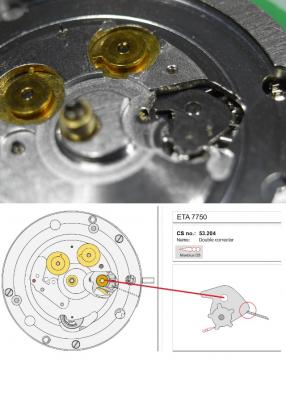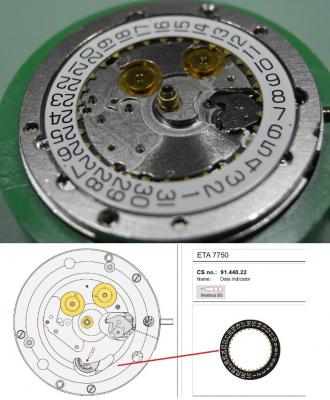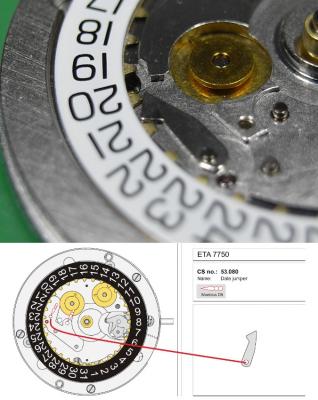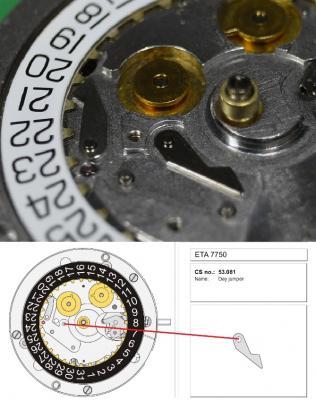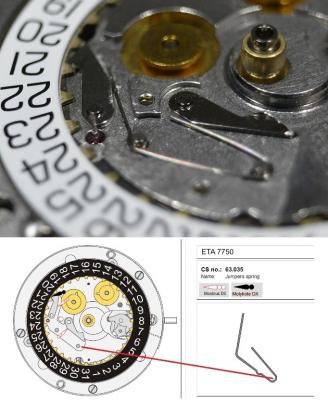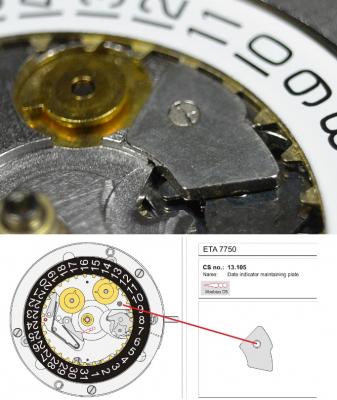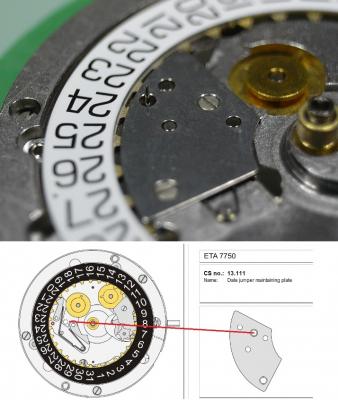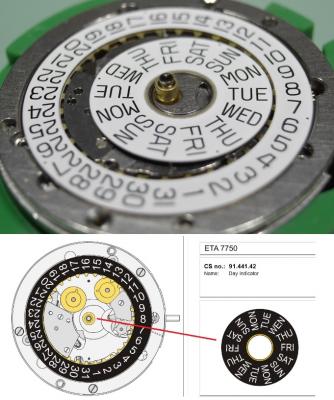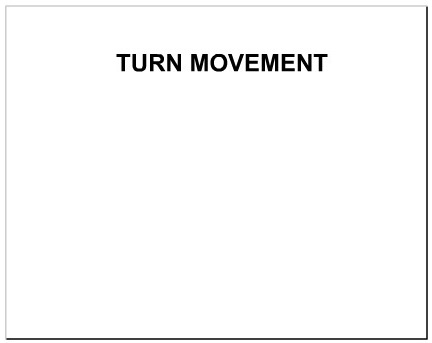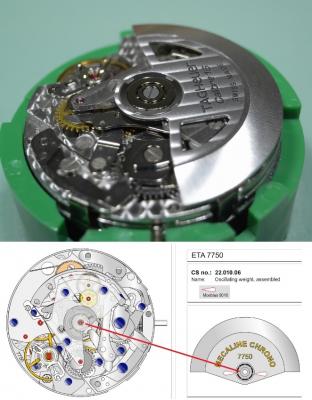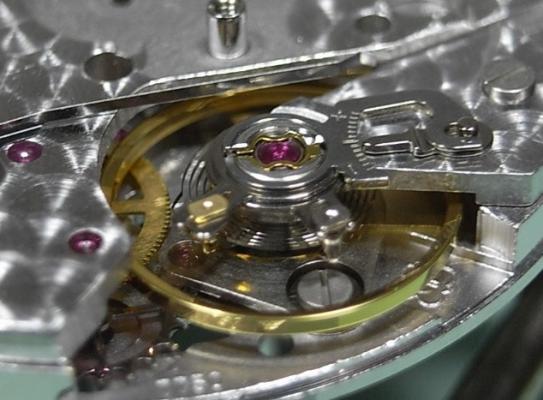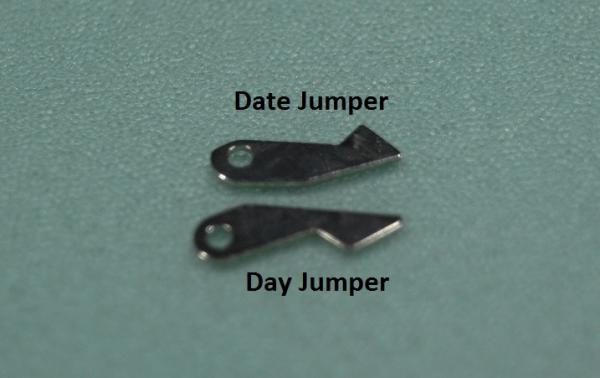Leaderboard
Popular Content
Showing content with the highest reputation on 02/29/20 in all areas
-
You need to check out German ebay, prices are far easier on the pocket, This seems about right for a almost complete boxed lathe https://www.ebay.co.uk/itm/ALTES-UHRMACHER-WERKZEUGE-LORCH-DREHBANK-DREHSTUHL-8-MM/383425549061?hash=item5945f19305:g:IXIAAOSwsCdeSqdv Factor in shipping and customs, also ask question about condition, I have used this seller before with no problems UHRMACHER DREHBANK (watchmakers Lathe )is a good search phrase to use on German ebay.2 points
-
2 points
-
ETA 7750 Service Walkthrough The 7750 was first available in 1974, having been one of the first movements to be designed with the aid of a computer. It's hard to believe that the 7750 is still the industry standard movement for chronographs considering it's history. It was developed over 40 years ago by Valjoux, who was then a legendary movement maker that was part of the giant ASUAG conglomerate. But by the end of 1975 production was stopped due to the onslaught of the Quartz Era, and the 7750, along with many other mechanical calibers, was abandoned. Industry demand for this movement was so low that the stock produced in that 1 year manufacturing lasted until 1982! Such was the devastation of cheap Japanese produced quartz watches to Swiss manufactures. History may have forgotten the 7750 except for the local management at Zenith who ignored the orders by Valjoux to destroy the dies and equipment used to manufacture the 7750, instead hiding the equipment away from corporate eyes. You can find many more fascinating facts about this caliber online, and it's well worth the read. ................................................... This walkthrough will be very detailed, and I hope this will give people the courage to tackle this movement. I've serviced quite a few calibers, and this is one of the most beautiful, with a very logical layout. ETA7750 Tech.PDF If you have built your skills with basic movements, and become proficient in servicing them, I would highly recommend this movement to be your first chronograph to tackle. Lets begin. DEMAGNETIZE THE MOVEMENT BEFORE DISASSEMBLY. Remove the Day Indicator and store it in a safe place where it won't be damaged. Unscrew (0.8 Driver) the Jumper Maintaining Plate and remove it. Do the same for the Date Indicator Maintaining Plate Carefully remove the Jumpers Spring, holding it with a piece of pegwood so it doesn't ping away. Next remove the jumpers for the day and date. The jumpers differ from one another, so here is a reference photo so you can see the difference. Remove the Date Indicator and place it in a safe place where it won't be damaged. The last piece to remove on the Date Platform is the Double Corrector Now unscrew (1.4 Driver) the Date Platform and gentle pry it from the movement. Be careful when removing this plate, as there is a fine spring pressed into the plate that can be easily damaged. Here is a reference photo of the screws that hold the Date Platform. Remove the Hour Hammer Spring, once again using the pegwood to hold the spring while removing the tension. Here is a reference photo of the correct orientation of the spring. Remove the Hour Counter Lock. Remove the Hour Hammer Operating Lever. Next is the Hour Hammer, be careful when removing this item so as not to damage the Hour-Counting Wheel. Now remove the Hour-Counting Wheel. Remove the Date Indicator Driving Wheel Remove the Day Star Driving Wheel Then remove the Intermediate Calendar Driving Wheel Remove the Hour Wheel Then the Minute Wheel Remove the Cannon Pinion, which does not require a puller. The last component to be removed on this side of the Main Plate is the Driver Cannon Pinion. To lift the Driver Cannon Pinion I used what Mark used, a set of hand lifter from Horotec (MSA05.007); but you can also use a Presto Tool (30636-1) which will also work well. The dial side of the movement is now complete disassembled. Flip the movement over and unscrew (1.5 Driver) the Oscillating Weight. To remove the Hammer Spring lift it up gently over the automatic work and move it inwards. This will move the tail of the spring in a clockwise motion to the opening in the slots, which will free the spring. Slide out the Clutch Spring. Here is a reference photo of this spring, and it's orientation. Remove the screws (1.4 Driver) for the Automatic Device Bridge, and gently pry it loose. Here is a reference photo of these screws for the bridge. Once the Automatic Bridge has been removed, the two wheels for the automatic work are able to be removed. Below is a reference photo of how the sit inside the bridge. We now begin to disassemble the chronograph section of this movement. Begin with removing the Hammer, 2 Functions. Next remove the Clutch 60s, 2 Functions. Then remove the Minute-counting Wheel, 30min. Remove the Chronograph Wheel 60s, 30min. Gently lift out the Oscillating Pinion, 60s. Here is a reference photo of the orientation of this pinion. Unscrew (1.4 Driver) the Chronograph Bridge and gently pry it off the Train Wheel Bridge. Remove the Ratchet Driving Wheel. Remove the Chronograph Wheel Fiction. Unscrew (1.4 Driver) the Operating Lever, 2 Functions. Unscrew (1.4 Driver) the Lock, 2 Functions. Next remove the Minute-counter Driving Wheel, 30min. Slide out the Operating Lever Spring, 2 Functions. This spring can be fitting in both directions; but only 1 way is correct. Here is a reference photo of it's correct orientation. Remove the Switch. Here I digress from the order the SwissLab document illustrates the order of removal. They show to remove the Chronograph Cam before removing the Hammer Cam Jumper. This in my opinion is not the best way, as all the force from the jumper is pressing on the cam whilst your trying to remove it, and could lead to damage. Instead I move the Chronograph Cam until it reaches the notch as shown in the photo below. Then lift the Hammer Cam Jumper up to the top of the Chronograph Cam, which will release it's tension. Then, just as you removed the previous hammer, rotate the jumper to the opening in the slots, which will free the spring. Now you can unscrew (1.4 Driver) and remove the Chronograph Cam safely without tension on it. RELEASE THE MAINSPRING TENSION Once the tension has been released, unscrew (1.4 Driver) and remove the Balance Cock. Then unscrew (1.4 Driver) the Pallet Bridge and remove the bridge and Pallets. Unscrew (1.2 Driver) and remove the Ratchet Wheel. Then remove the Crown Wheel. Unscrew (1.4 Driver) the Train Wheel Bridge and gently pry it off the Main Plate. Note that one of the screws is under the Operating Lever. This needs to be moved out of the way to access this screw. The last level of this movement contains the train. Here is a reference photo of the wheel locations. Remove the Stop Lever. Remove the Great Wheel. Here is a reference photo of the underneath of this wheel. Remove the Third Wheel. Here is a reference photo of the underneath of this wheel. Remove the Second Wheel. Here is a reference photo of the underneath of this wheel. Note this has the long lower pivot. Remove the Escape Wheel. Here is a reference photo of the underneath of this wheel. Then remove the Barrel. This completes the removal of the train. Flip the movement over so we can complete the disassembly by removing the keyless work. Firstly, release the tension from the Setting Lever Jumper. Then unscrew (1.2 Driver) and remove the Setting Lever Jumper. These are unique screws with pointed ends, and below is a reference photo of them. This will also remove the Intermediate Setting Wheel. Next remove the Setting Wheel Then remove the Yoke. Remove the Setting Lever. Remove the Rocking Bar. Now pull out the Stem. Once the Stem is removed the Winding and Sliding Pinion should fall out of the movement onto your work mat. Disassembly of the 7750 is now complete If you've come this far, congratulation on completing the disassembly. Make sure you pegwood all the jewels and reinstall the Balance back onto the movement for cleaning. Assembly of the movement will be posted as soon as I complete the write-up.1 point
-
Please take a closer look at the pic OP posted, shows the housing set somewhat deep inside the hole, only in pieces could the spring have come out of there.1 point
-
As often mentioned. Go around the back edge, carefully with a sharp blade until you can remove it. Once it's off there can be casing screws to remove.1 point
-
I would say enough of an issue to avoid it. My recommendation would be a WW pattern lathe, often referred to as American style. Brands to look for are Boley, Boley-Leinen, Lorch, Wolf Jahn from Germany, Levin and Derbyshire from the states. The Brits had a number of excellent makers too, but didn't produce as many as the Germans and Yanks. The Pultra you linked is a great machine, the only drawback is it takes 10mm collets which are harder to find than 8mm. On the other hand it is very complete and the price is fair. It's top quality and plug-and-play... and you always can sell it for the same money.1 point
-
I could not center the work decently on the three jaws, so took out the four independentant. But on the base of the drill chuck there is no usable surface, and on the body the dial was hitting the on the jaws, So I had to make a spindle extension, bottom left. Drilled a center, turned a 5mm rod with the rolling dead center, drill on the press, then tap and thread. A cheap set worked well. There is about 0.1mm clearance between the tip of the spindle and the parts next to it, and about the same betweek the chuck jaws and the swarf screen, but it worked to an acceptable centering. I was also able to tighten the work with the thread rod. Bored to size and chamfered the work, I still have a problem to solve before tapping, but that was enough for today.1 point
-
1 point
-
Hi I think its way over the top you are paying for the bergeon name there. I picked one up in the UK for £350 with cross slide, ,bernard chuck, drill attachment, assortmet of collets and cutting tools all mounted with motor etc. Its an American pattern and quite versatile.1 point
-
Looks a bit pricey. Also a personal presence this, for me no tip over rest. When cutting a balance etc the tip over makes life so much easier. If your based in the UK then this company are always worth looking at for tools/lathes etc. https://pennyfarthingtools.co.uk1 point
-
The Bergeon is definitely too expensive. The Lorch above looks great, but it's a reversed lathe; the Germans sometimes liked working with the headstock on the right. The lathe itself can be oriented as you like, but the cross slide can't be reversed.1 point
-
Yes seems too expensive to me and does not come with many collets. Collets are expensive you want to get as big a set as possible when you buy the lathe else you could end up spending as much again on collets1 point
-
Way too expensive. I have 13 lathes and may want to lighten the load. Sent from my iPhone using Tapatalk Pro1 point
-
Difficult to argue with that since you are unwilling to share your "method", however, since the subject of this thread is "CUSTOM DECAL DIAL TUTORIAL", and not some mysterious secret "method" let me address the subject of longevity of decals. Decal making has a long history, dating back through the centuries, and is arguably as old as the act of tracing an image on to a substrate, however the modern process, it could be argued really took off some time in the late 18th and early 19th centuries. (19th century "Decalomania" Vase) One of those credited with its invention was the engraver Simon François Ravenet ( a contemporary and assistant of the English painter, print maker and satirist William Hogarth). The process has evolved into a stable of modern industry, with decals appearing on all manner of substrates and in all kinds of processes. The process used in the waterslide decals described in this thread, for use on watch dials is almost identical to the process used on children's toys throughout the 20th century, with everything from clockwork tin plate Hornby locomotives to Matchbox and Dinky cars being adorned with water slide decals. Any process that can survive the actions of a child playing with it could hardly be described as anything other then very robust, assuming the surface on to which the decal is being applied, is clean and blemish free, and the decal is applied according to the prescribed method. Clearly the only way to know if these dials will stand the test of time is to wait 100 years and see if they are every bit as legible as their early 20th century counterparts, however, considering that they will generally not be subject to abrasion, moisture, harsh UV light or solvents, and that their surface is sealed with a waterproof lacquer, I have no reason to doubt that they should bear up just fine.1 point
-
I saw this video tonight on my YouTube feed. It focuses on automatons. These were mechanical creations designed to display the skill of watchmakers. Truly amazing. I'm relatively certain our humble members wish we had this level of skill. Fascinating story. https://youtu.be/C7oSFNKIlaM1 point
-
1 point
-
Obviously a Bit off-topic; "but as for knowing no good use for it", perhaps talk to the aviation industry ?; "Gluing a Plane Together It is not widely known by the general public that aircraft wings are usually glued on to the plane, not riveted, bolted, or using some other mechanical fasteners. Which means that a thin layer of polymeric material is what is holding the plane up in the sky. It's not the wing or the engine or the Bernoulli principle [1], it's the polymer adhesive." Super glue is a classic example of a polymer adhesive. Last, after all other options failed, I had no other option than to Super-glue a chrono seconds recorder hand to it's pipe bushing ..... holds up perfectly. I wouldn't say as a "standard" procedure, but in some case ..........1 point
-
Hi there, Many thanks for your reply and help on this device,I can now have a play about with a couple of scrap movements that I have been able to pull apart for odd spares.Regards,Seth.1 point
-
1 point
-
1 point
-
At least she looks comfortable. My daughter's cat 'Clive' regularly is bought round to us, it's sort of his second home. He manages to go to sleep in the most strange positions, looks like he has been run over! I think that Fozzy is starting to copy him....... Not at all lady like!1 point
-
Hi there Hayden... 'Failure is your best teacher' I always say to my watchmaking students. jdm is correct about not taking apart the family heirloom for the first watch to work on and also listed the biggest mistakes that are going to happen when someone first starts out on the journey of watchmaking. Springs are one of those things that the more you disengage and refit, the better and more confident you are going to become. If you have a descent pair of tweezers that are well honed and kept clean they will become an extension of your own hand, although this can take some time. I was told when I started that it would take up to two years to use them properly at which I scoffed, but realise that wasn't far off the truth, exactly like a micro surgeon and his knife. I use carbon steel tweezers, because they are hard, don't bend and you can grip really tightly with them. You should be able to pick up a human hair off a piece of glass. I get a doubled over piece of 1000 grit wet and dry paper and grip it with the tweezers and uniformly pull it away from the tips. This puts an ever so slight grain on the gripping faces and you will be able to hold screws and springs so much easier. A sharpened piece of pegwood is a good idea to hold down the spring when you are disengaging or/and refitting it. The more times you do it with the proper tools that are in good shape the easier it will become and the confidently you will hold said piece. Personally, I don't endorse using a plastic bag, because it is akin to riding a bike with always having stabiliser wheels on, or driving at 5 mph, just in case you hit something. But each to their own, it's just the way I do it and teach it. Working on cheap movements and losing/breaking pieces is part of the process. Once you get more confident and better at it, then you will work on some quality movements, because your skills and confidence in what you are doing will have grown. You are doing well, so don't get discouraged. It's like learning how to ride a bike.... you need the bruises to learn.1 point
-
Absolutely more Ebay watches, the Timex you showed was a kind of extreme on the low side, beside they are not build much like the others. Most people picks Indian HMT or Russians - of the latter sorry I don't know which ones are to recommend. I would avoid Chinese as they are easy to break. Japanese are great but the good / sought ones are expensive, so perhaps postpone these. And the Swiss are always a bit more expensive but in the end they are the classic schooling subject. I am talking about men wristwatches unless you have a liking for pocket watches. To learn, getting 5 watches for 10 euro each is much better than a 50 euro one. A great exercise is take apart quartz watches and then put them back together without losing or breaking anything. Isn't easy as it may seem especially if you challenge yourself to that without looking at the service manual - take an habit of taking pics at any step and fully familiarize with parts, their names and function and orientation. Ideally one should fully understand how things work and why they are built as they are. That is where books help the most. And the hardest excercise would be ladie's watches, which require top dexterity but are cheap as chips. Of course, don't neglet yourself any tool. Chinese ones are generally OK, some may need a bit of refinishing before use. Some tools you will need to get quality, new or vintage, like cannon pinion puller, Jacot's (when it will be time), and others that honestly exceed myself too.1 point
-
The advice is to get a really basic movement, a minimum of tools and perhaps a book or two, and proceed slowly. For a good movement the Unitas (now ETA ) 6497 or 6496 are the ones used in schools. There's a Chinese clone too. It's large and works great. When you get the moves down on that, smaller and more delicate pieces become easy. I think what jdm is cautioning against is jumping in too deep and losing interest. Watchmaking is 50% confidence and that is gained from succeeding.1 point
-
A Vestron "Foreign" (so probably German) pin lever pocket watch. I actually picked this up to scavenge the hands from, but I couldn't resist having a look inside to see what ailed it. The balance was rattling around, but on closer examination it appeared to be complete, so I removed and re-fitted the balance cock and balance, gave the whole thing a quick and rudimentary clean and oiled the pivots. Off it went. It clearly still has a couple of issues. No crown, no stem and no second hand being the obvious ones. However, straight off the bat, and without any adjustment it is sitting around +80 sec per day, with the adjuster slap bang in the middle, so I'll let it run down and see how it fares. Hopefully as the oil gets to work, it will slow down slightly. I may have to source another watch for the parts for this watch, that I sourced for parts for another watch..... There is nothing mad about that whatsoever .... is there?1 point
-
1 point
-
1 point
-
So far I don't have a tailstock chuck. The original one is stupid expensive and only 6mm max. So I got a cheap 13mm one and tried to re-thread to M14x1. The first attempt came so much off center and crooked that I was ashamed to post about it. I could not throw away such a valuable part, so put it on the the lathe securing it with a 10mm threaded rod through the spindle, to a female threading section in the drill chuck I bored the mounting hole to 19.5mm, turned a matching plug, pressed it in and gave it a first facing. The friction fit was perfect but being the plug not tapered I wanted to stay on the safe side, so drilled 3mm centered on the edge of the edge, and pressed in matching pin. I felt like having invented the steam engine in doing that. To avoid repeating my earlier mistake I decided to bore not just drill the hole. That involved a short fight to replace the press drill chuck with a shorter one, drill 12.5mm then move again to the lathe At this point I ran out of time, I'm a very very slow machinist.1 point
-
1 point
-
haha, story of my life.....poke your head in my garage for a glimpse on how it ends (don't let the wife see).1 point
-
As long as it dose not impedes the free movement of the train. It wouldn,t be a watch/ movement you would want to purchse neither to take pride in, but keeps time on your wrist. The choice you take very much depnds on the value of your watch. ,,1 point
-
ETA 7750 Walkthrough Part 2 Assembly Now we come to assemble the movement. Here are the lubricants that will be used. Now nothing creates more discussion and controversy than which lubricants should be used on movements in various applications. This is how I approach it ... your choices may vary. The 7750 I am servicing here is a "Top Grade" ETA movement made for TAG, which would normally be cased with a display back. Because of this I will be using Molykote DX instead of Jismaa 125 or 9501 grease for areas that will be seen. As their lubricating qualities are very close, my choice of using Molykote DX is purely for ascetic reasons, as its less visible to the eye, then the bright colours of the 9501 and Jismaa 125. You will notice that Molykote DX is recommended in the 7750 PDF; yet on the SwissLab documentation it states to use Jismaa 125, so all these lubricates are recommended and safe to use. If this was a "Standard" or "Elabore" Grade movement with a full metal caseback, then I'd just go with the SwissLab recommendations, or 9501 for ease of servicing. With all that being said, here is the Lubrication Index for this walkthrough. Housekeeping Make sure your work area has been wiped down to remove any dust, and clear away any unneeded items from around your workspace. Inspect your Screwdrivers and Tweezers, and dress them up if needed. There is nothing worse than marring a screwhead, or have components ping from your tweezers because they need to be re-dressed. Put on some finger cots, or latex gloves. Personally, I use only one latex glove on my left hand, as any manipulation with my right hand will be done with my old trusty customized Dumont Brass #4 tweezers. NEVER touch cleaned parts with bare hands, this will leave prints and tarnish the finish over time. We begin with the parts fresh from cleaning. Try and arrange them in a logical order to start with, this will save you time fishing for parts later on. The 7750 has 7 types of screws, and you'll need 4 sizes of screwdrivers - 0.8, 1.2, 1.4, 1.5mm 1) Date Platform, Crown and Ratchet Wheel Screws 2) Setting Lever Spring Screws (Note the pointed ends) 3) Hammer and Cam Screws 4) Oscillating Weight Screw (Single Screw with the short thread) 5) Pallet Fork, Main Plate, Chronograph Plate, Automatic Work Plate Screws 6) Screws for the Jumper Maintaining Plates 7) Single longer screw for the Balance Cock I like to arrange all the screws in groups like this, that way they are quick to find, and mismatching screws can't happen. One more thing to note on this assembly walkthrough, is that I started by using the 7750 plastic movement holder. I quickly however changed to a Bergeon 4040 movement holder, and found this much better when it came time to fit the plates and align pivots to their jewels. I'd suggest you use the Bergeon 4040 holder right from the get go. Lets begin! Place the Barrel on the Main Plate Next is the Escape Wheel Followed by the Second Wheel, which has the long pivot for the sub-dial hand. The Third Wheel is next to be installed With the last wheel in the train being the Great Wheel. Place 2 small spots of D5 as shown, so the Stop Lever will have a smooth action. Install the Stop Lever. Now install the Barrel/Train Bridge. (1.4 Driver) Make sure all pivots are located correctly and the train is free spinning BEFORE tightening down. Once tightened down check end shake. Install the Crown Wheel Then the Crown Wheel Core and screw down (1.2 Driver). Install the Ratchet Wheel and screw down (1.2 Driver). Once this is done, using a 1.2 Driver, turn the screw on the Ratchet Wheel a 1/4 of a turn to add energy to the Mainspring, and check the free running of the train. Next is the keyless work. Lubricate the Winding and Sliding Pinion as shown below. Also add a spot of 9501 to the Main Plate where the Winding Pinion will come in contact. Be sure when installing he Sliding Pinion that it's seated properly on the Stop Lever Install the Sliding Pinion Install the Winding Pinion Lubricate and install the Stem. Next is the Driver Cannon Pinion. This is one area that needs a lot of lubrication, as it will bind and damage the movement if it becomes dry. To install the Driver Cannon Pinion I use a Horotec Hand Fitting Tool MSA 05.011 Once properly lubricated, install the Driver Cannon Pinion Before installing the Rocking Bar, lubricate the points on the spring. Install the Rocking Bar. Install the Setting Lever Install the Yoke. Place the Setting Wheel on it's post. Construct the Setting Lever Jumper with the Intermediate Wheel As noted above, the screws for the Setting Lever Jumper are the ones with the pointy threaded ends. Be sure to lubricate position points on the setting bar before you lever it into place. Install the Setting Lever Jumper / Intermediate Setting Wheel. The keyless work is now complete, check it is functioning correctly, then turn the movement over. Once the movement is turned over install the Pallet Fork. Then install the Pallet Bridge. Once the bridge is in place, give the mainspring a few winds and check the free movement of the Pallet BEFORE screwing it down (1.4 Driver) After tightening down check the end shake. Use 9415 on the Exit Pallet Stone to lubricate the escapement. Replacing the Balance and oiling the Incabloc Jewels is next. Place the Balance back onto the movement, checking that it's free running before tightening the screw (1.4 Driver). Once tightened check side shake and end shake is correct. Remove the Incabloc Jewel, and then remove the Balance. Note the longer screw that is used to secure the Balance Cock. Cleaning them carefully by soaking in a container with Lighter Fluid ... I use Zippo Fluid. Once clean, dry the Balance and Incabloc Jewel and place a drop of 9010 on the Jewel as shown below. Make sure it covers at least 1/3 to 1/2 of the jewel, without the oil touching the sides of the jewel. Give the movement several winds to add some power to the Mainspring. Replace the Balance back on the movement and refit the Incabloc Jewel. Check that the Balance is oscillating freely. Then repeat the process for the jewel only on the Main Plate. Next to be installed is the Hammer Cam Jumper. Here is my method for installation. Place the Hammer Cam Jumper into position, turning it clockwise to lock it into the slots. Then place the Chronograph Cam on it's post, so that it rests on top of the cam jumper ... as shown below. Then while holding the arm of the cam jumper back, seat the Chronograph Cam into position and affix the screw (1.4 Driver) Install the Switch Insert the Operating Lever Spring, 2 Functions. Make special note of the orientation of this spring, as it will fit in both directions; but only one way is correct. Without lubricating, install the Minute-counter Driving Wheel, 30min. Install the Lock, 2 Functions, and screw down (1.4 Driver) Before installing the next item, which is the Operating Lever, 2 Functions, be sure to lubricate the hinging point from underneath with D5. Then install the Operating Lever, 2 Functions. Be sure that the spring arm of the Lock is out from under the Operating Lever and screw down (1.4 Driver). Place D5 into the little slot opening in the top of the hinge point. Install the Chronograph Wheel Friction. Install the Ratchet Wheel Driving Wheel Before placing the Chronograph Bridge onto the movement, you need to oil the jewel circled in the image below with D5 After oiling that jewel install the Chronograph Bridge. Next, place the Reduction Wheel into the hole in the Chronograph Bridge. Note that there is no post to locate this wheel, as it's on Automatic Device Bridge which will be installed later. The next item is the Oscillating Pinion which seems to cause people a lot of frustration. Here's my method to install it. Firstly, be sure of the correct orientation, as shown below. Pull the Crown out to the third position to engage the Stop Lever and hack the movement. Keep the movement in this hacked position until the Automatic Device Bridge is installed. Then install the Oscillating Pinion and seat it into it's lower jewel. You'll know you've done this correctly when it sits up straight and centered in the slot ... as shown in the image below. By taking your time and getting it well seated you will have less trouble when installing the Clutch later on. However, before we install the Clutch and Automatic Device Bridge, there are a few wheels and a hammer that need to be installed. Install the Chronograph Wheel, 60s, 30min Install the Minute-counting Wheel, 30 min. Install the Clutch 60s, 2 Functions. The Clutch needs to slip underneath a small click spring for the Reversing Wheel, so be careful not to bend and damage this spring. Then gently lift the arm of the Clutch over the Oscillating Pinion. Yes, it's a delicate job, but with a steady hand, patience and well dressed tweezers, it's not too hard. Before we install the Reversing Wheel, we need to lubricate it. The product needed is Lubeta V105, which is an immersion, or dip, lubricant. Simply hold the Reversing Wheel with tweezers and dip it into the solution. Then allow it to dry, which takes about 10 minutes. This leaves behind a waxy type lubricant that has impregnated deep into the wheel. Once dry, install the Reversing Wheel Install the Hammer, 2 Functions. Make special note of the orientation of the cam to the hammer. You may need to rotate the cam into this position before you fit the hammer. Now it's time to install the Automatic Device Bridge. Make sure all wheel pivots are correctly located in their jewels before tightening down (1.4 Driver) Pay close attention that the Oscillating Pinion is still seated correctly in it's pivot hole on the Clutch. One other troublesome operation for people is installing the Clutch Spring. This is my method of installation. Slide the long arm of the spring into it's position until the shorter end is touching the automatic bridge. Then with your tweezers grab the point illustrated below and lift it over the locating screw. Once over the screw, push it forward and until the loop is seated on the locating screw. Lastly, install the Hammer Spring, 2 Functions. Now you can un-hack the movement by pushing the Crown into it's winding position. Check that the Oscillating Pinion is being driven by the movement. Check the Chronograph functions are engaging and dis-engaging correctly by operating the pushers. Once you are satisfied all is well, turn the movement over. Now we come to the calendar work. For this I place the movement back in the Horotec 7750 plastic holder (MSA 09.050-01) Install the Free Cannon Pinion Install the Minute Wheel. Install the Hour Wheel Install the Intermediate Calendar Driving Wheel Next the Day Star Driving Wheel It is most important that you line up the driving tooth of this wheel with the marker on the Main Plate. If the wheel appears to be half a tooth off proper alignment, bring the Crown out to the hand setting position and adjust so the tooth lines up perfectly. Failure to do this will result in improper synchronization of the day and date. Install the Date Indicator Driving Wheel. This time you line up the wheel's driving tooth with the post for the Intermediate Calendar Driving Wheel. Failure to do this will result in improper synchronization of the day and date. Install the Hour-counting Wheel Install the Hour Hammer Install the Hour Hammer Operating Lever Install the Hour Counter Lock Install the Hour Hammer Spring Place on the Date Platform, and secure down (1.2 Driver) Install the Double Corrector, making sure the spring is correctly positioned. Place on the Date Indicator. Install the Date Jumper. Be sure you have selected the correct jumper, as the Day and Date Jumper are not Identical. Install the Day Jumper Install the Jumper Spring. Place on the Date Indicator Maintaining Plate and screw down (0.8 Driver) Place on the Date Jumper Maintaining Plate and screw down (0.8 Driver) Fit the Day Indicator, and test the function and timing of the Day/Date Turn over the movement to fit the last item. The last item to fit is the Oscillating Weight. Gently place it on the movement, check it's meshed properly and then screw down (1.5 Driver) Service on the ETA 7750 is now complete, and adjusting the timing of the movement is the only operation left. I hope this has been of interest and helps those wishing to tackle this caliber. I'm sure, as I did, that you'll find it a fun and reward movement to service.1 point
-
0 points





